Historic Headingley Omnibus
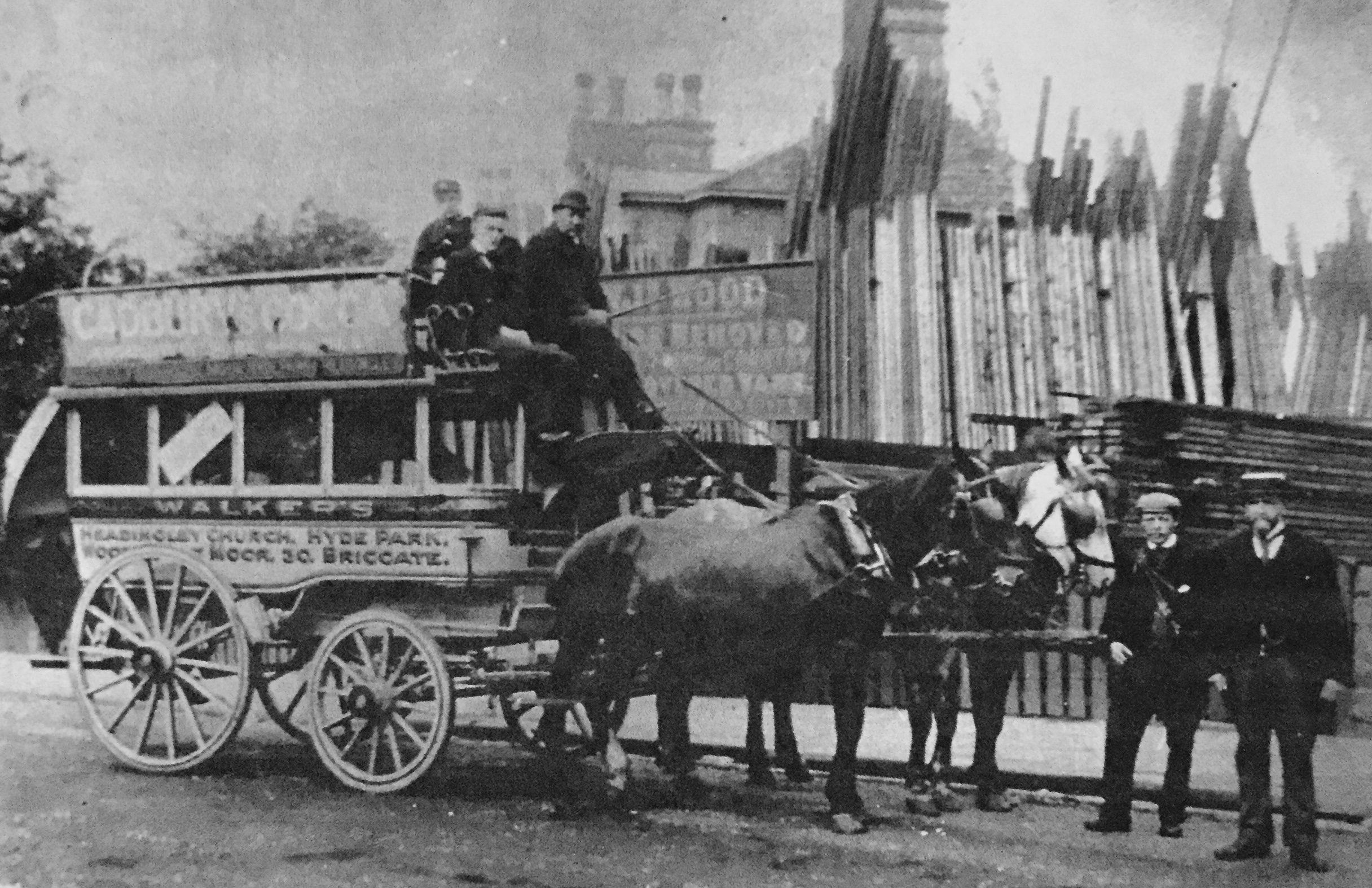
The first horse-drawn bus service began in 1838. Walker’s was later one of the main horse bus operators in Leeds, which introduced a service to Headingley Church in 1883, in direct competition with the trams; when the electric trams started, they saw the writing on the wall and diversified. © Thoresby Society
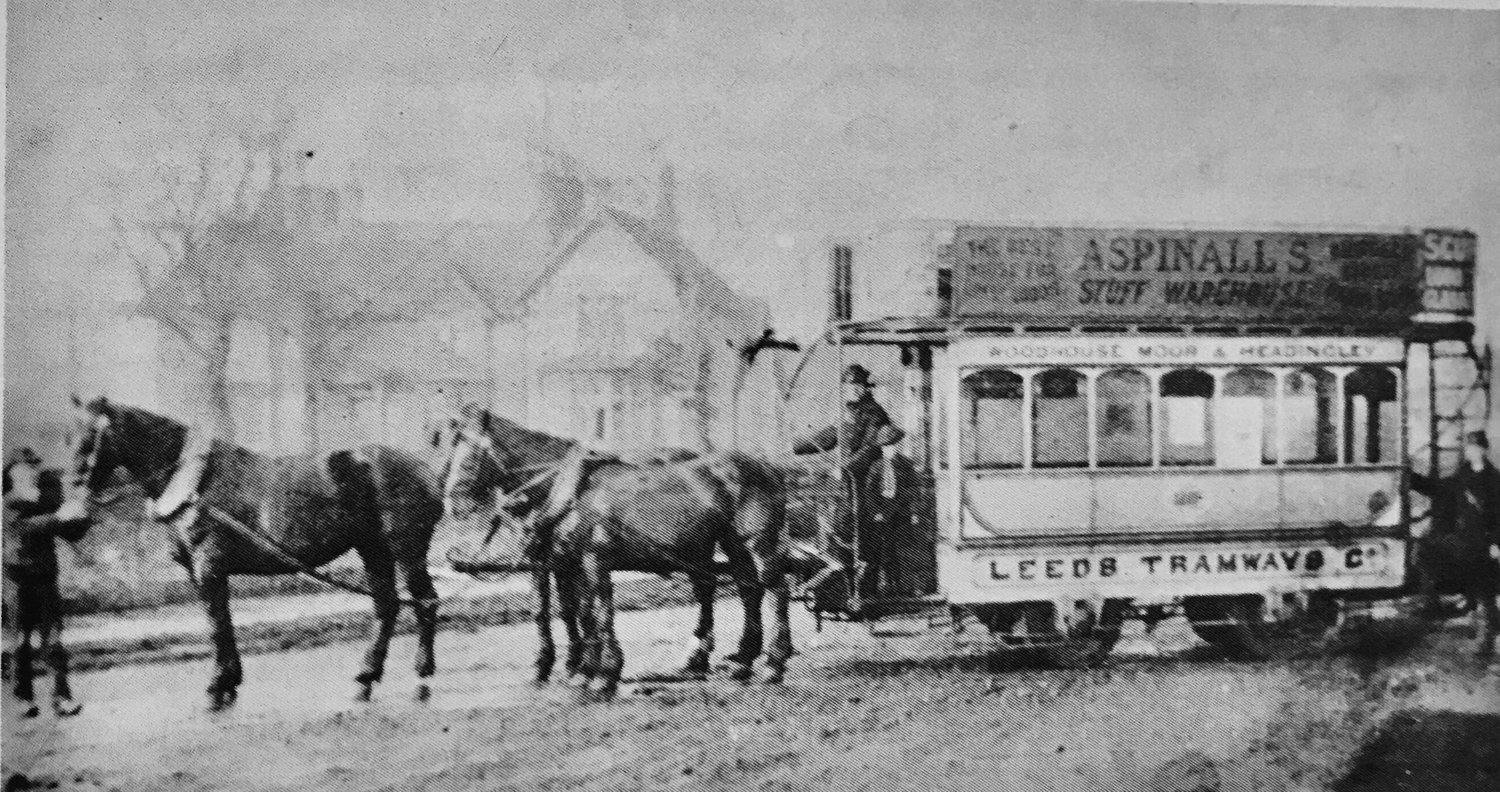
The first tram route began in 1871. The Depot was built in 1874. The building beyond the tram is St Chad’s Church Vicarage (demolished 1964). © LTHS
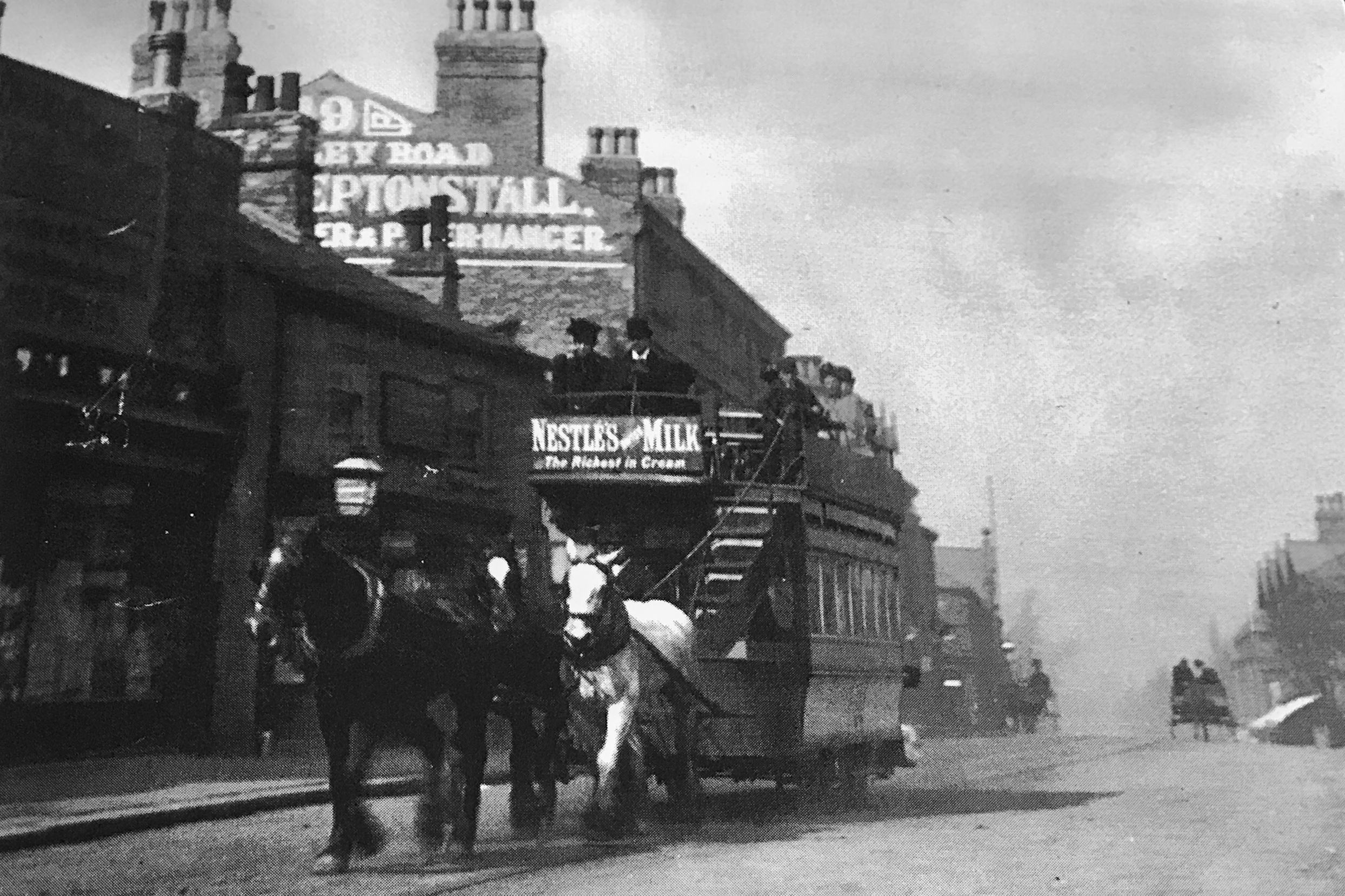
© Leeds University Library
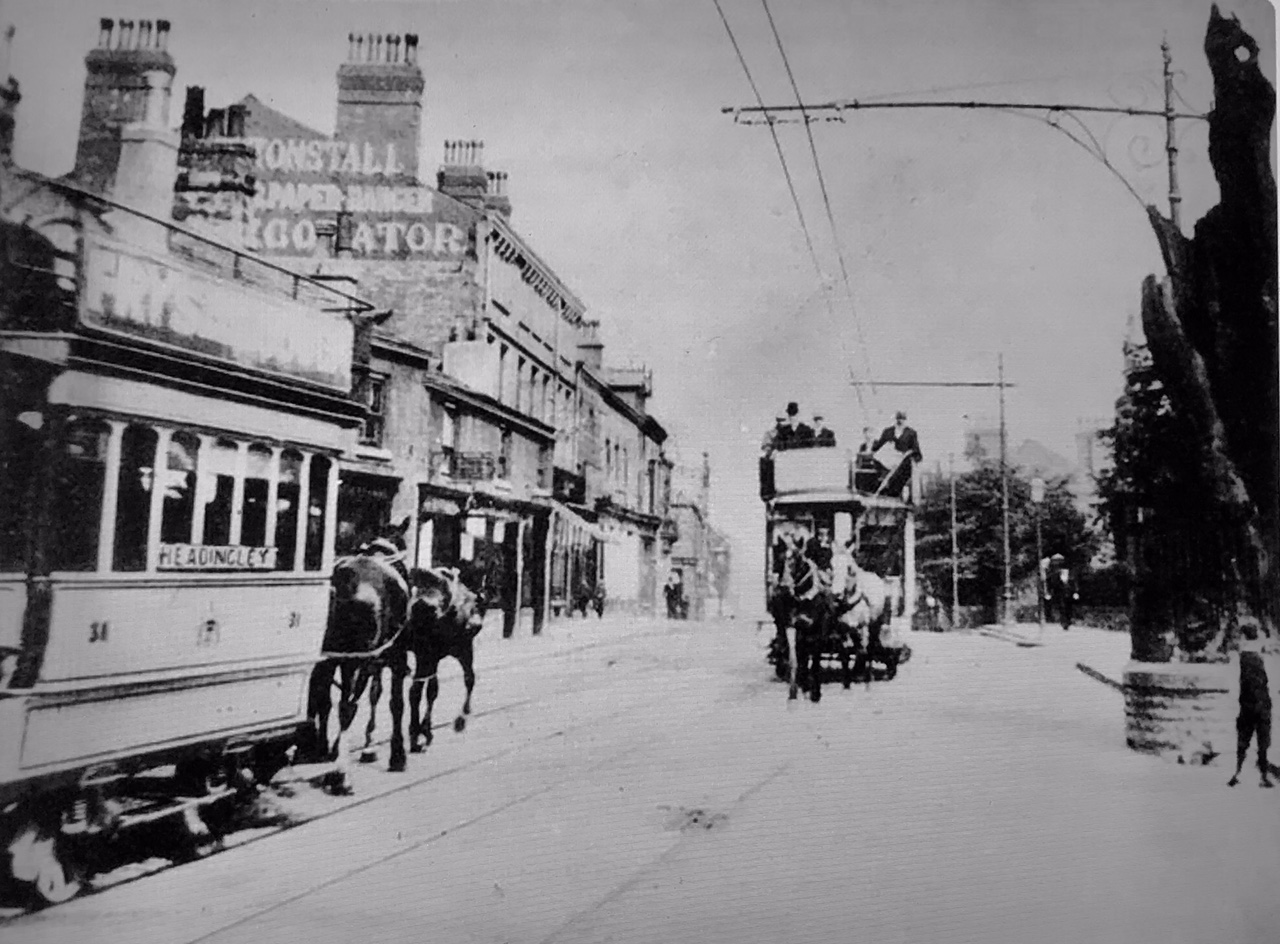
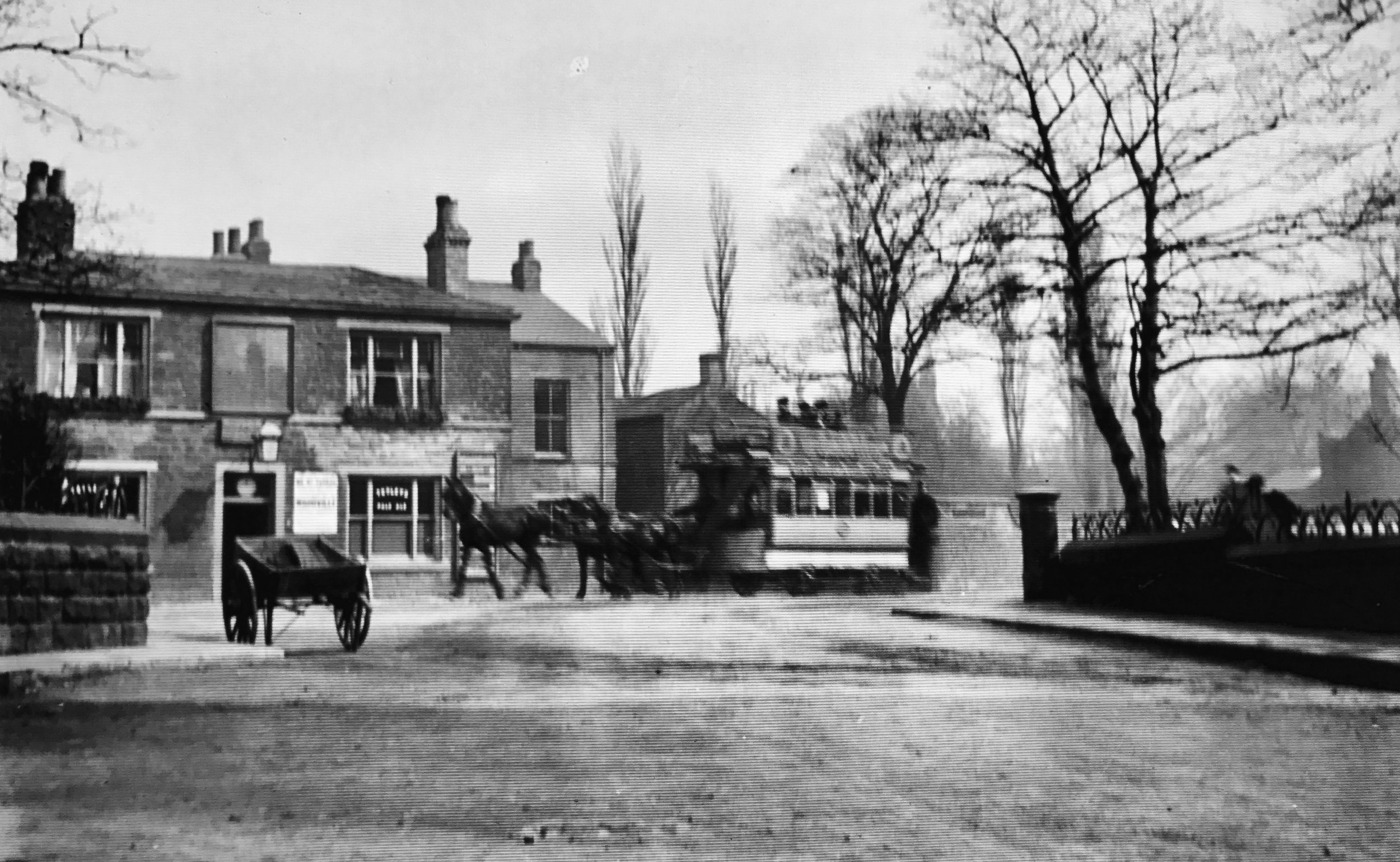
© Leeds University Library

The “trace horse” at the front suggests the tram is about to go up a steep hill or has just done so; they were provided up Woodhouse Lane and up Headingley Lane. © Tramways & Light Railway Society
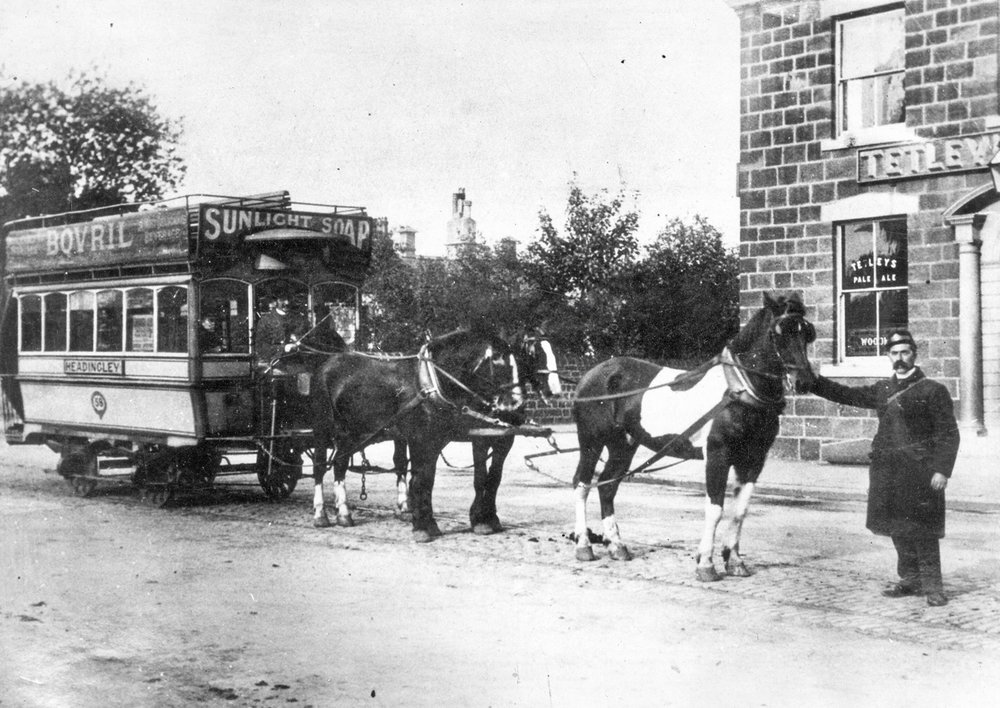
The Inn, now Woodies, has been much altered. © Leeds Transport Historical Society

© Leeds Transport Historical Society
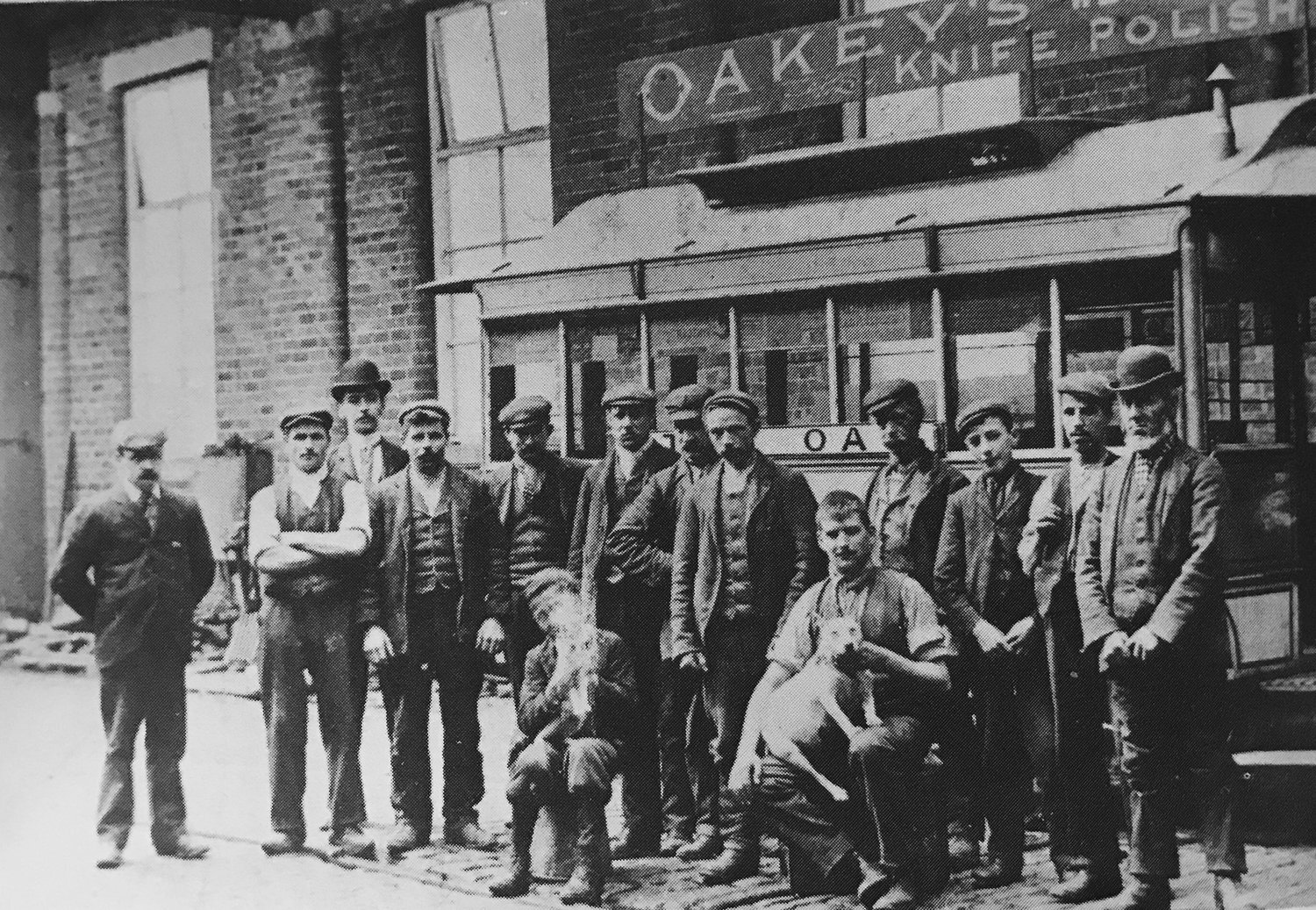
© Leeds Transport Historical Society
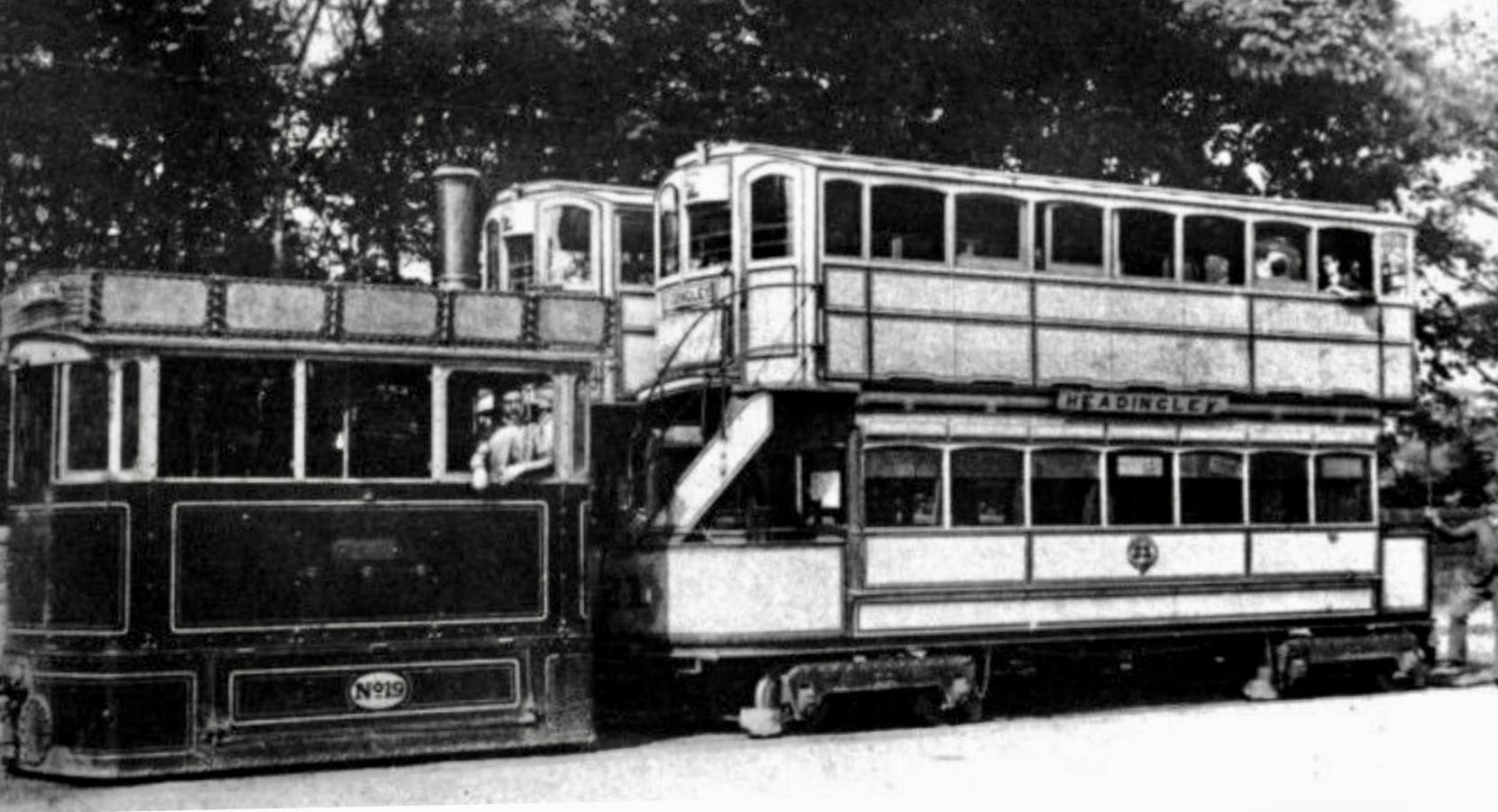
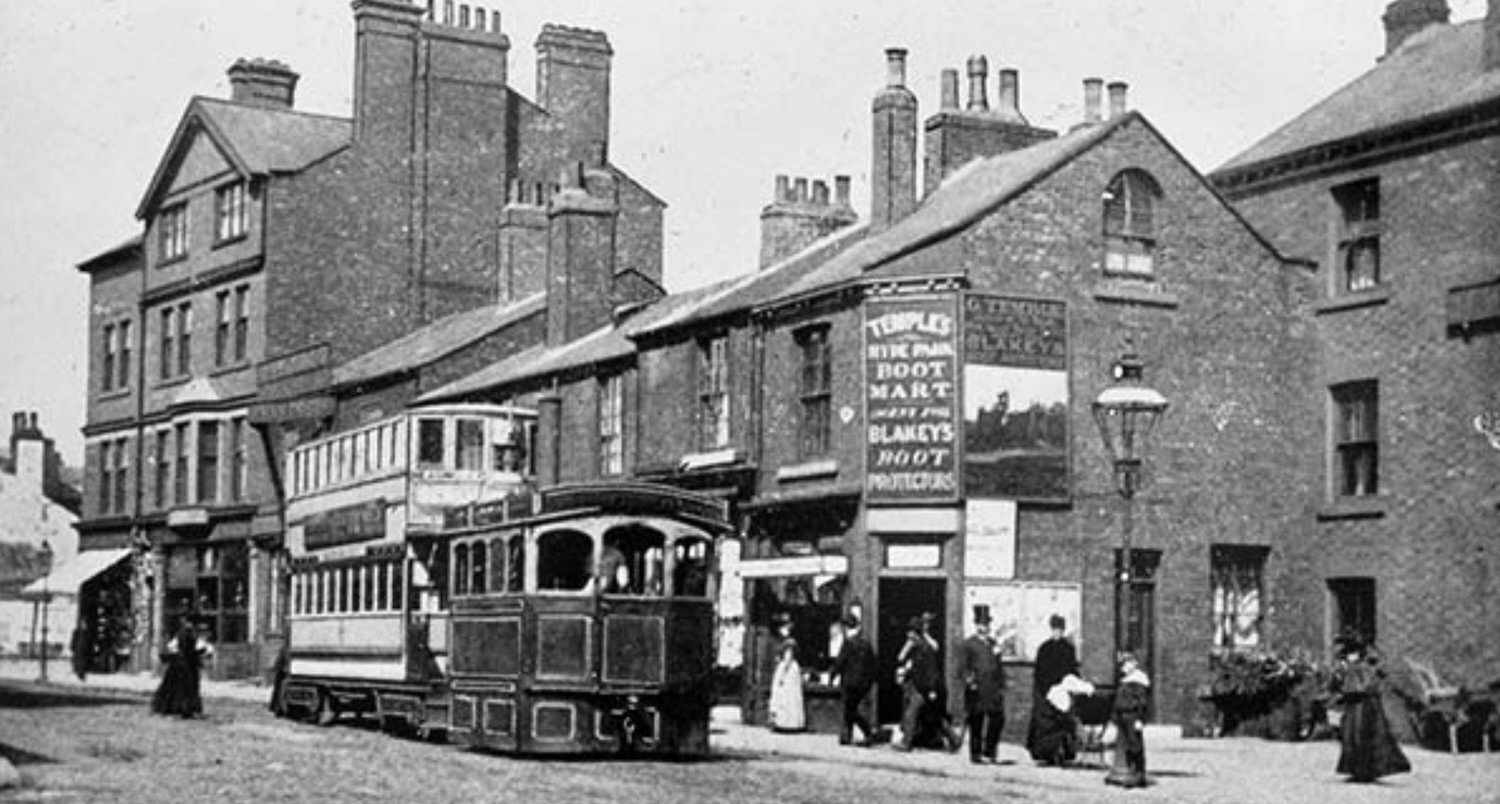
Steam trams operated 1882-1892. © Thoresby Society
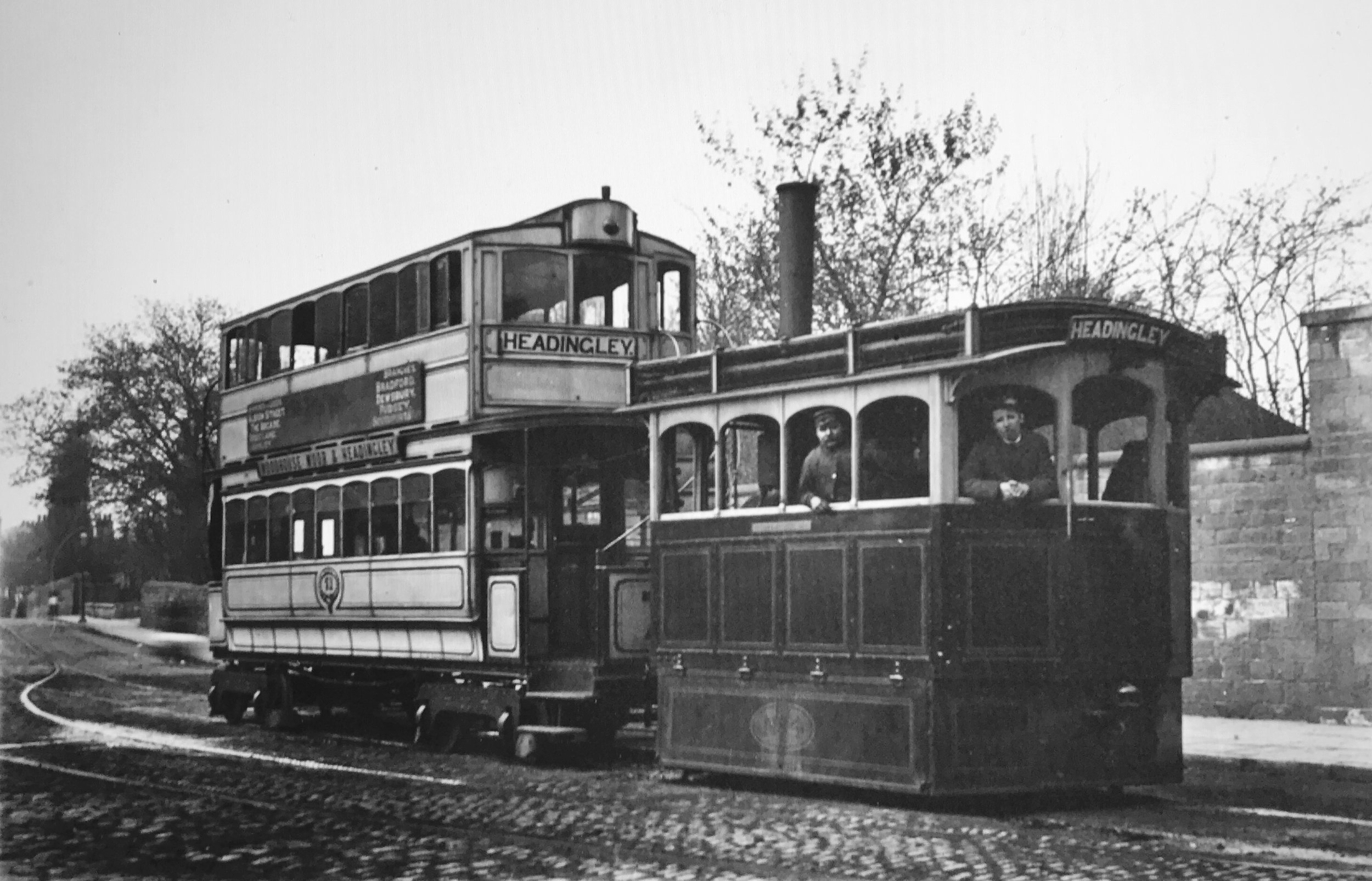
© Leeds University Library
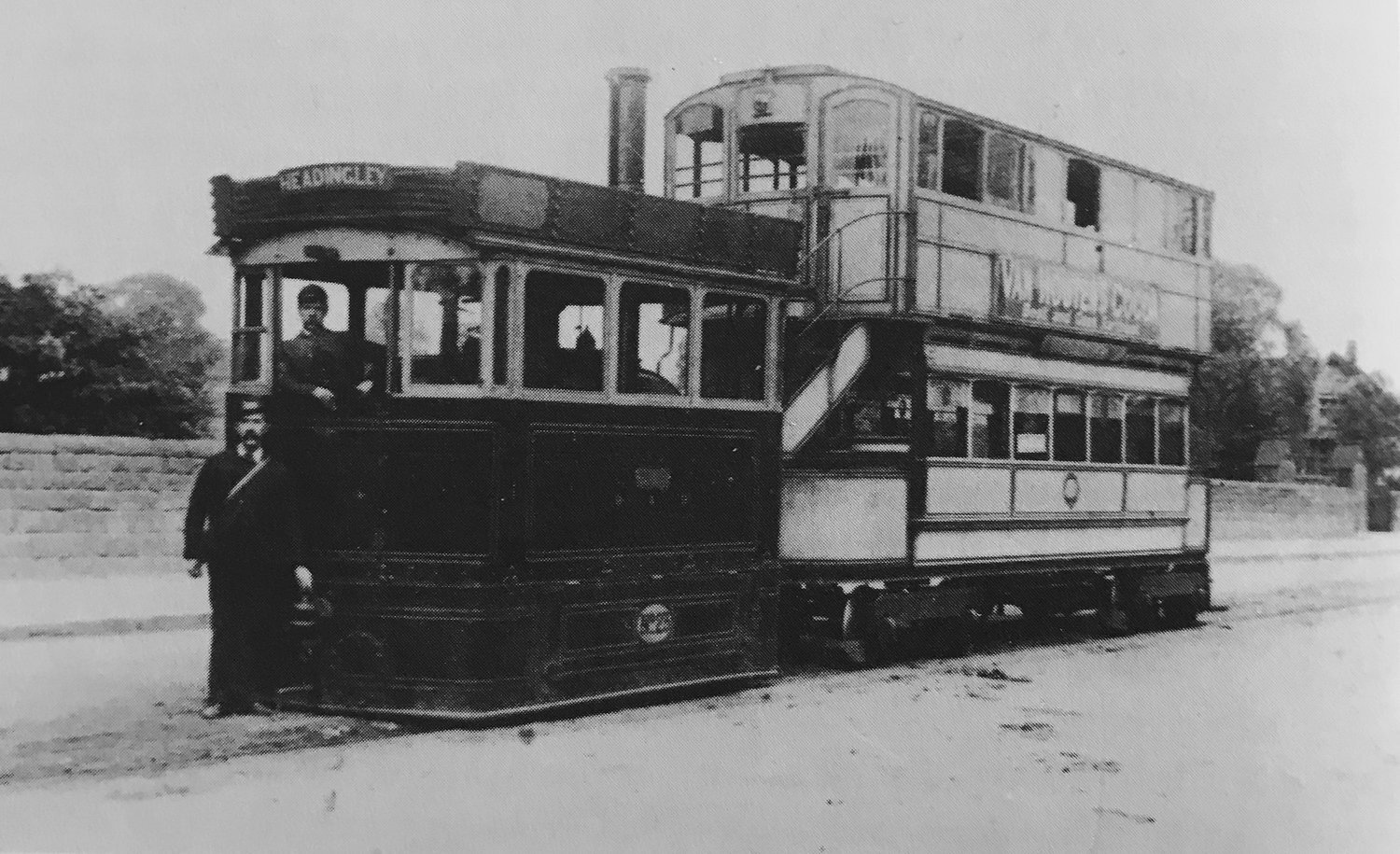
Beyond the tram are the wall and gates of St Chad’s Church, with the Vicarage to the right; the Depot was demolished in 1934. © LTHS
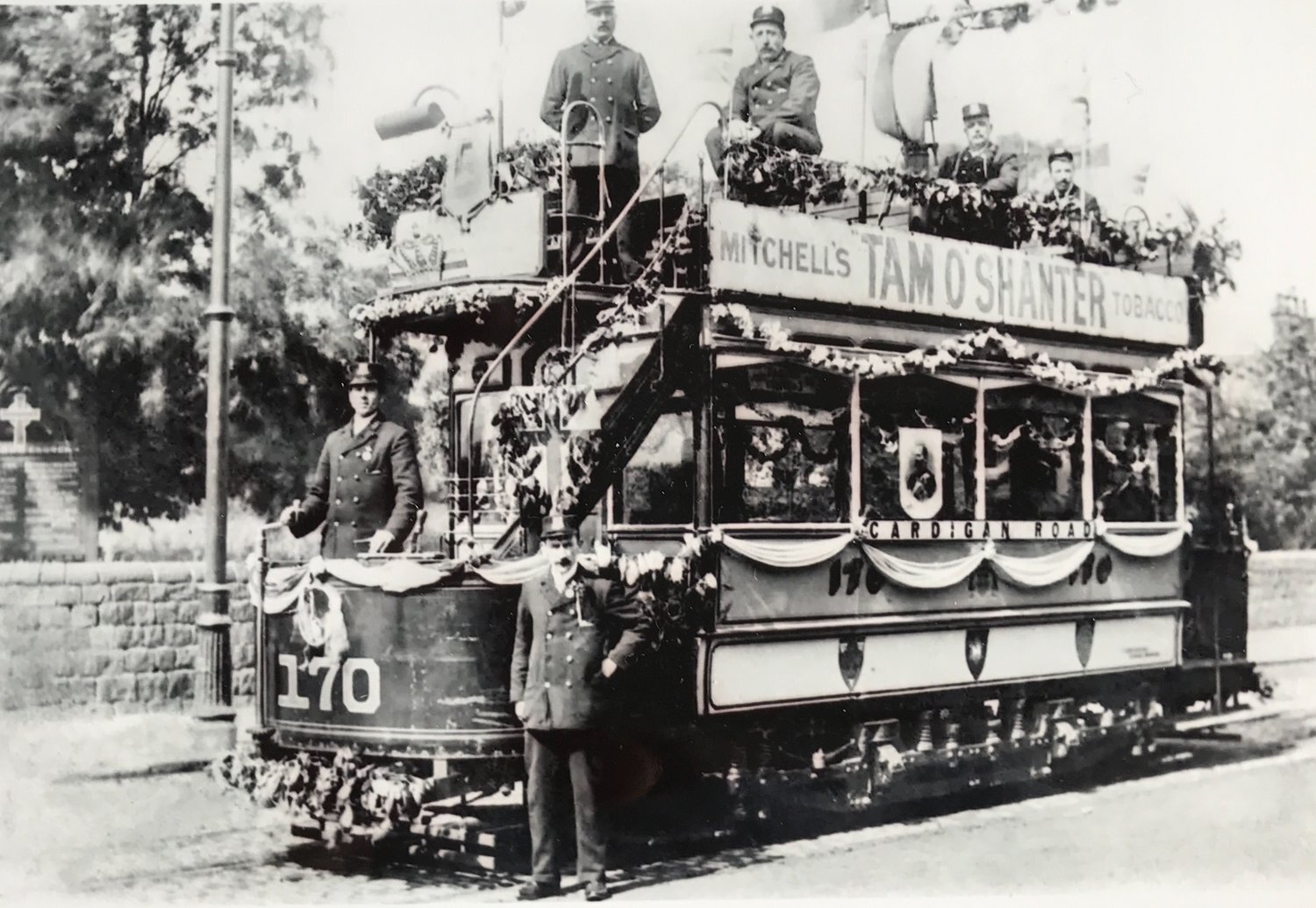
Electric trams were introduced in 1899. This tram was decorated for the visit of King Edward VII and Queen Alexandra to Leeds, to open an extension to the University.
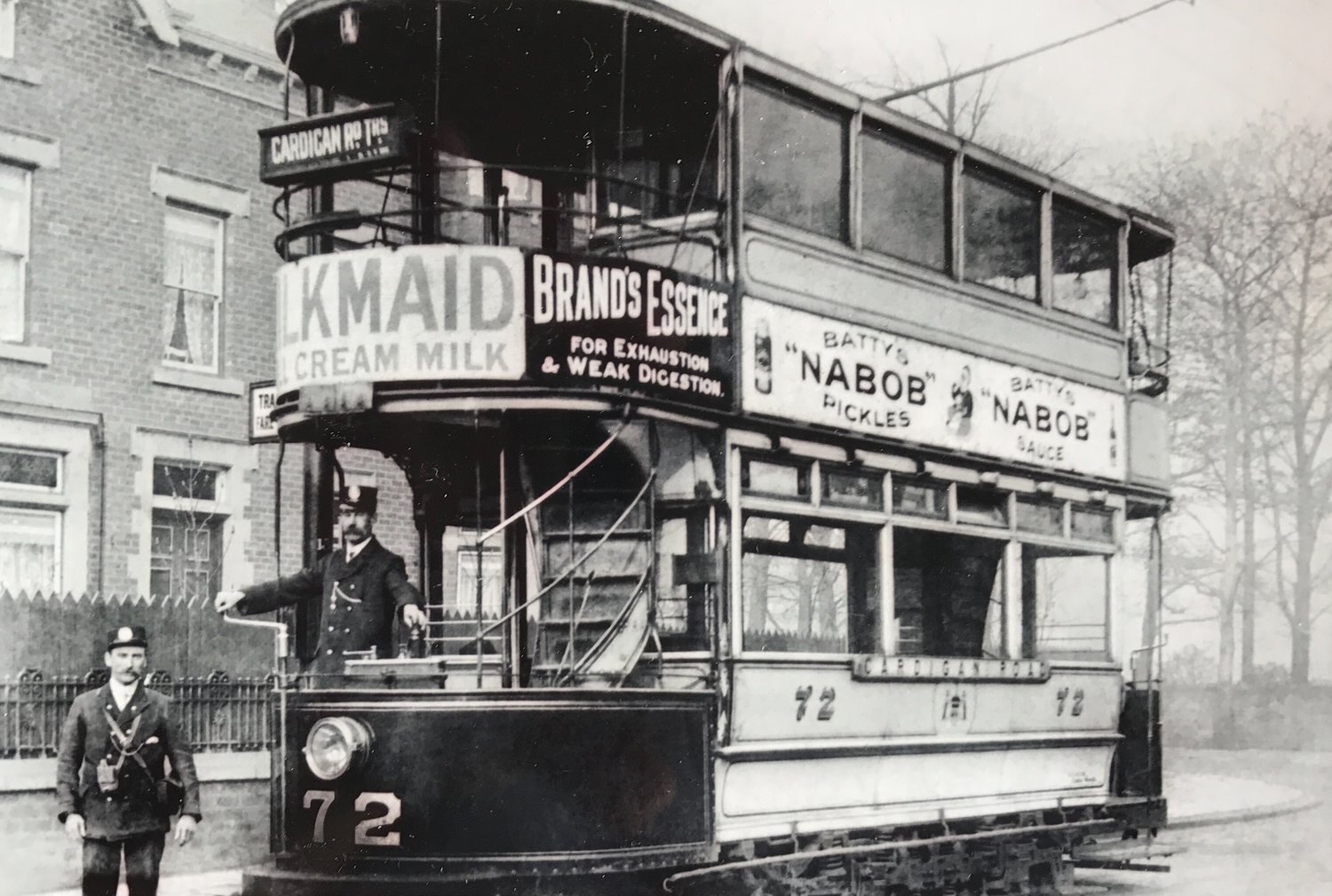
One route to this terminus ran via Hyde Park, down Victoria Road and up Cardigan Road; later, it was numbered Tram Service 30.
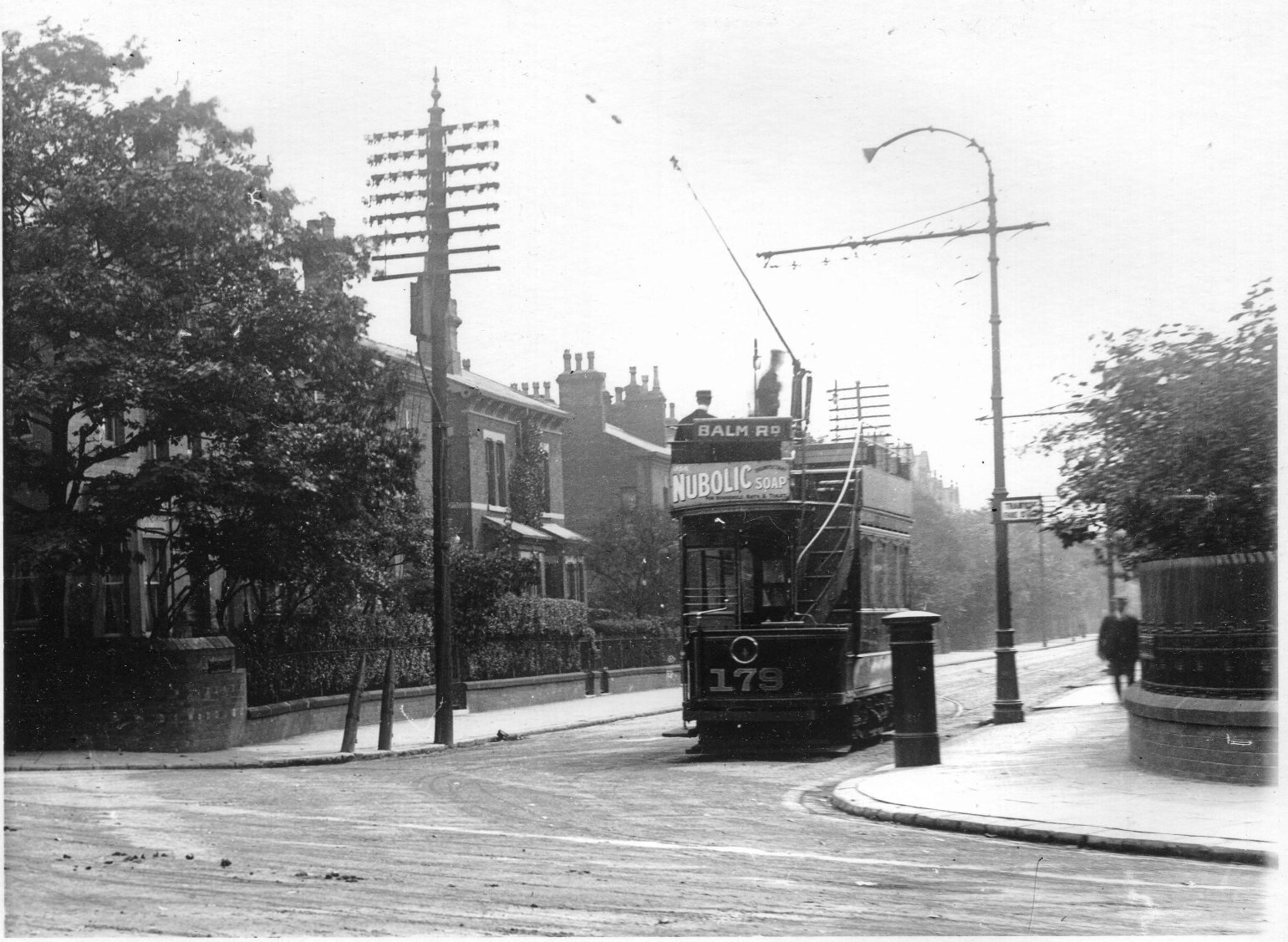
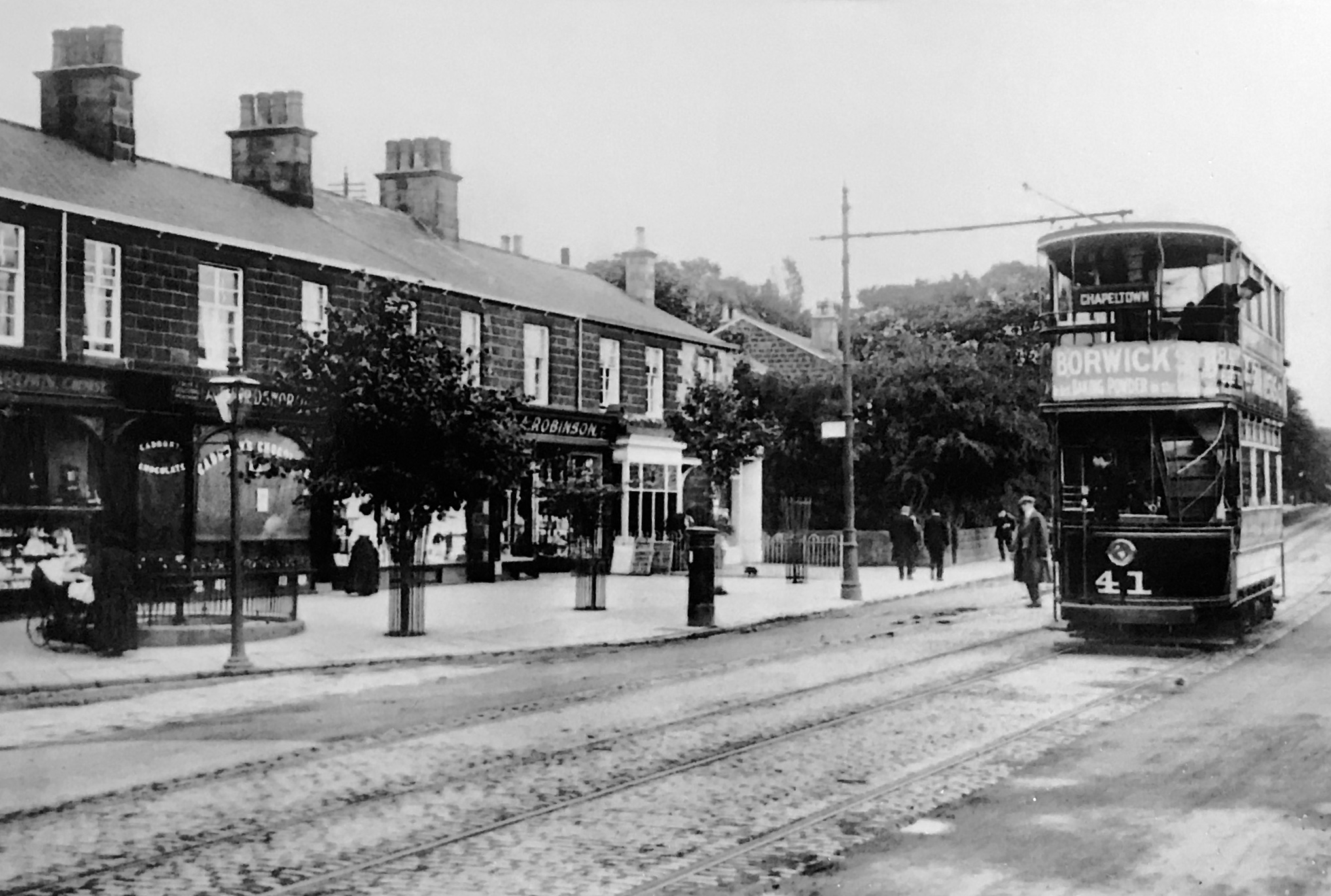
Tram No 41 dates from 1904; the platform was enclosed in 1912.
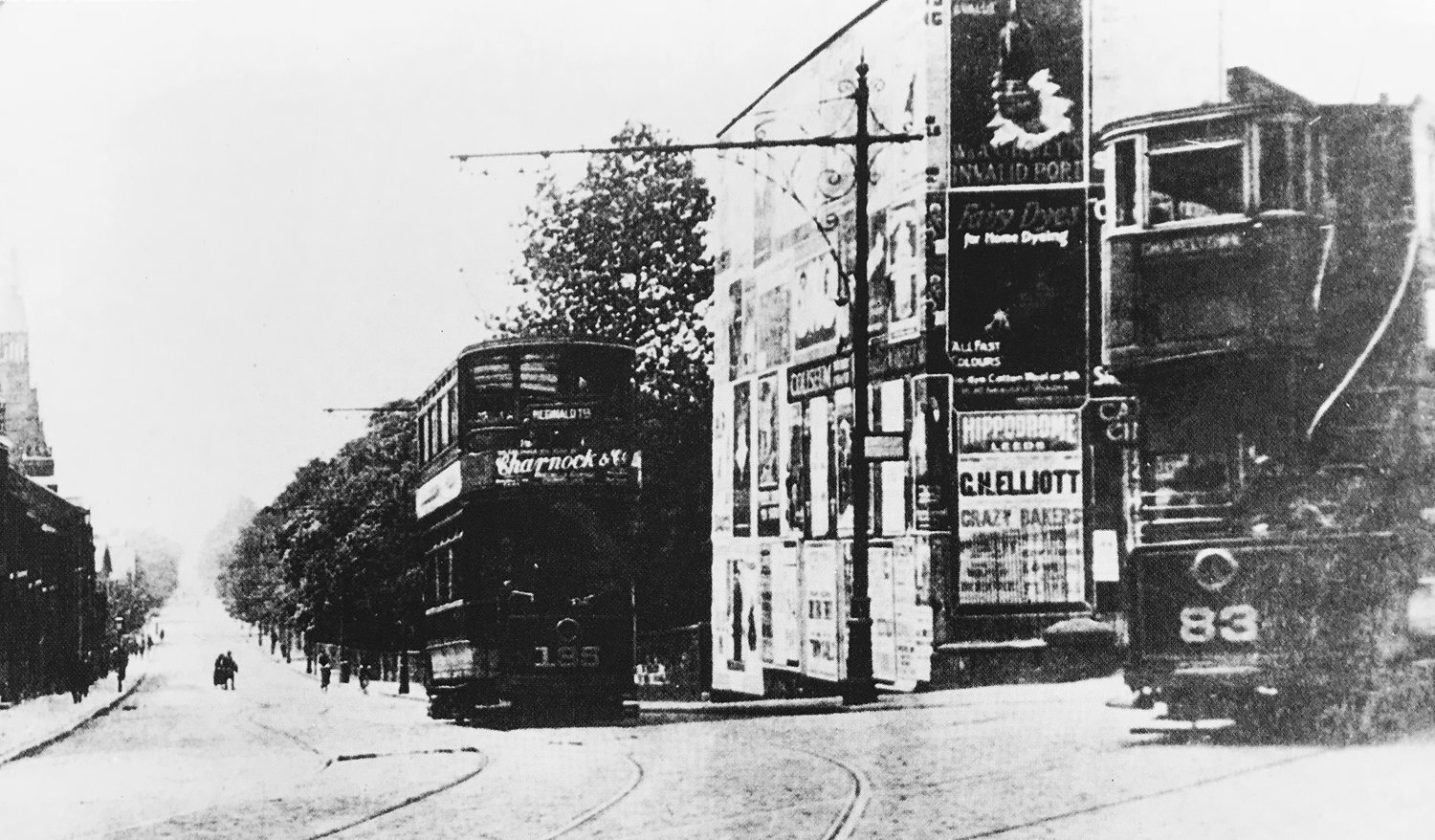

Tram No 120 was built by Leeds City Transport in 1908; the driver’s platform was enclosed by 1912.
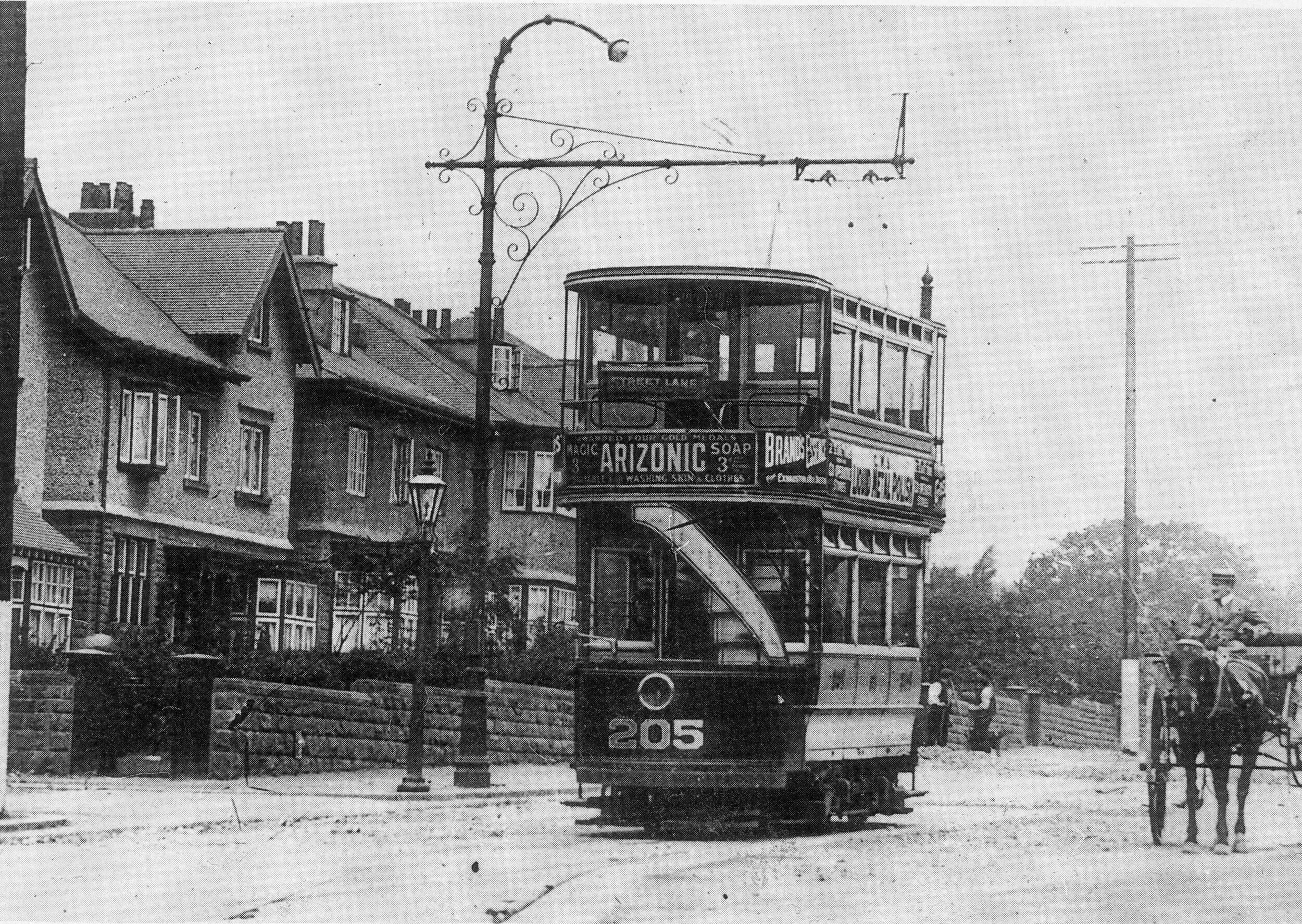
The tramline arrived here in 1908, terminating by Spen Road junction, and was extended to Lawnswood in 1913.
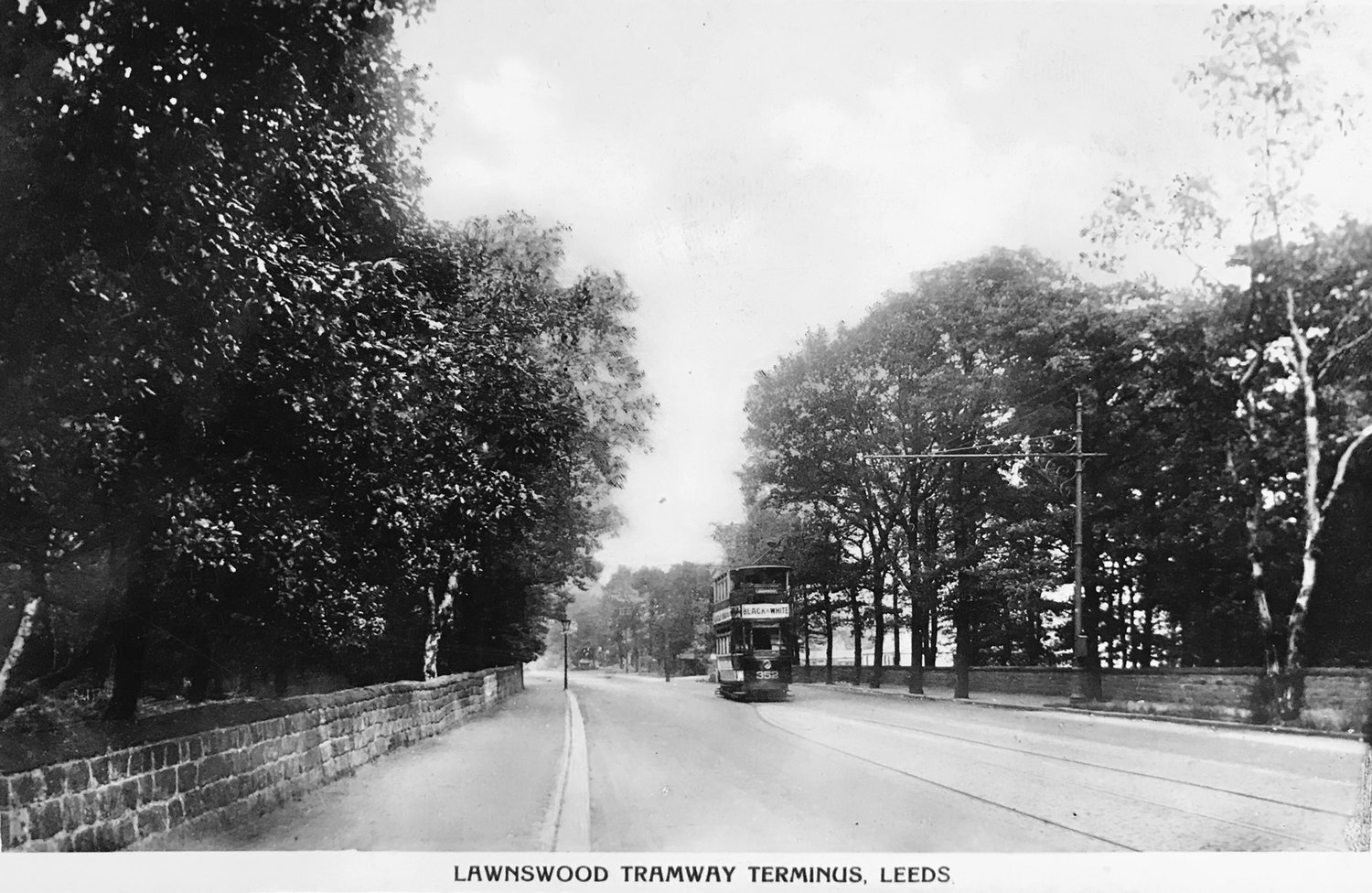

© Leeds Library and Information Service
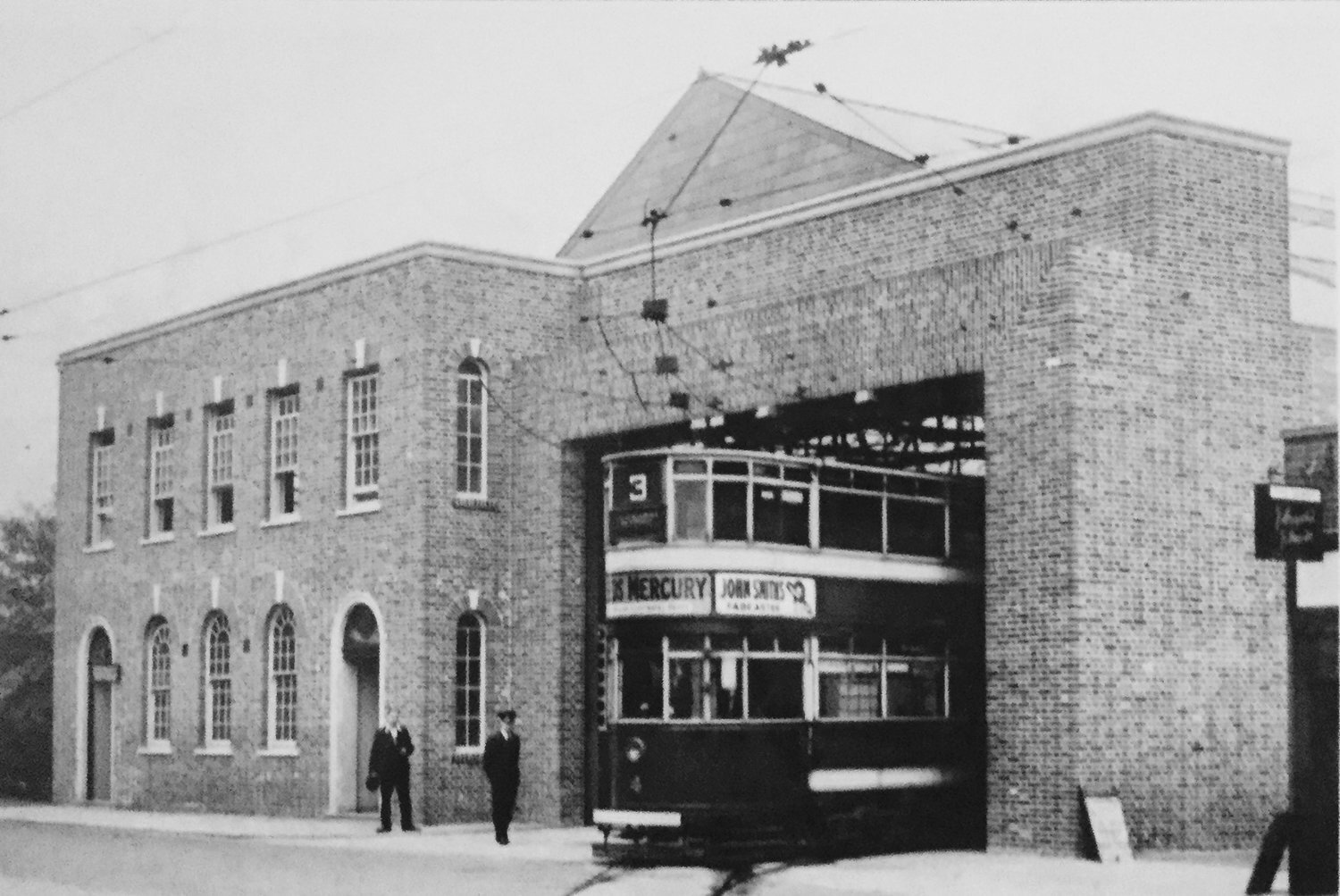
Tram routes were all radial from the city centre and the number referred only to the outward destination: route 3 is on its way into town, and then out to Roundhay. The replacement tram depot was built in 1935, and became a bus garage in 1956.
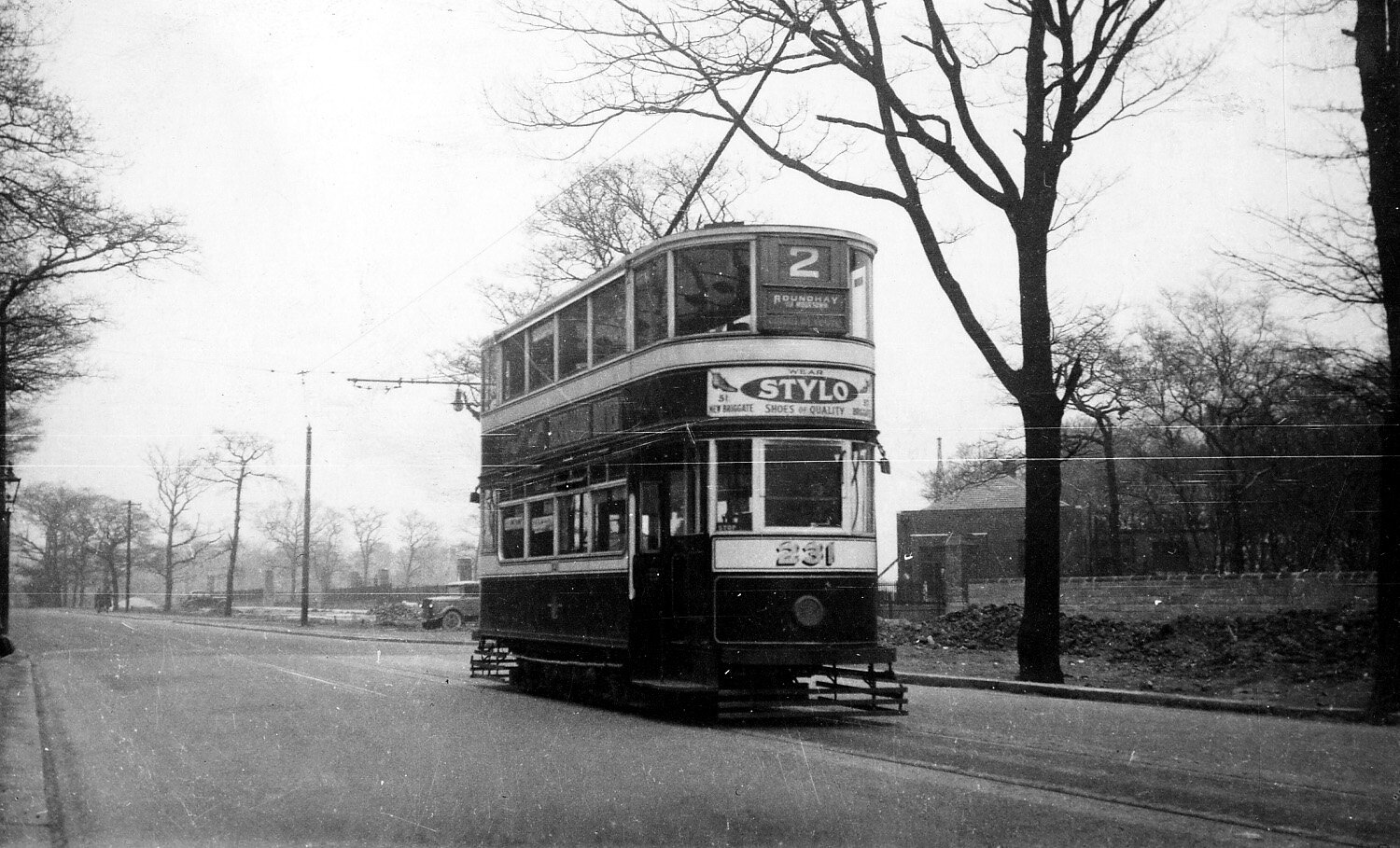
Route 2 went to Moortown, and then via Street Lane, on to Roundhay. In the background, preparations are under way for a dual carriageway to Lawnswood Cemetery, when trams moved to a central track (1939) (now a green central reservation). © Leeds Library and Information Service
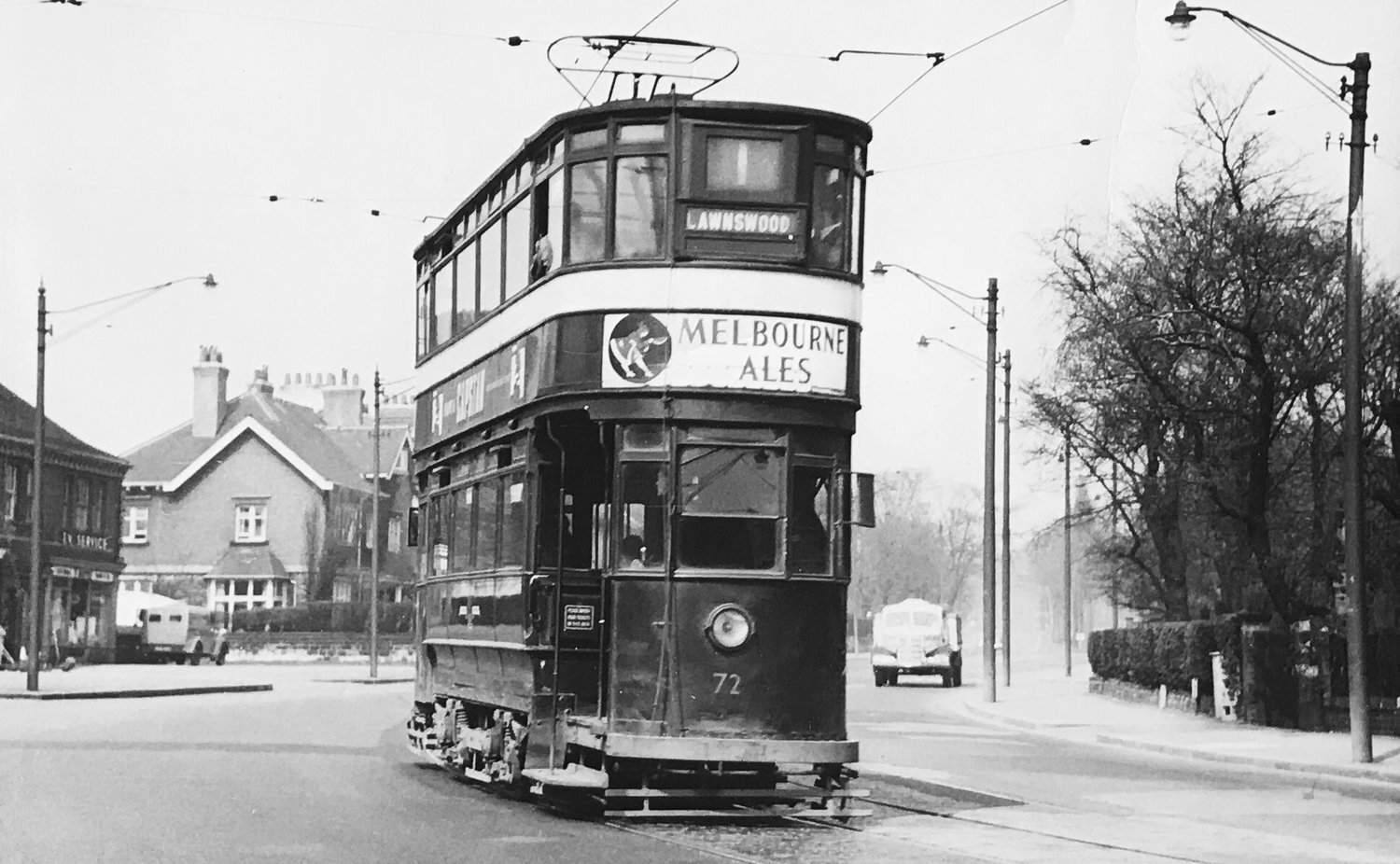
The tram is travelling north through West Park, passing the Spen Road junction on the left. © Leeds Library and Information Service
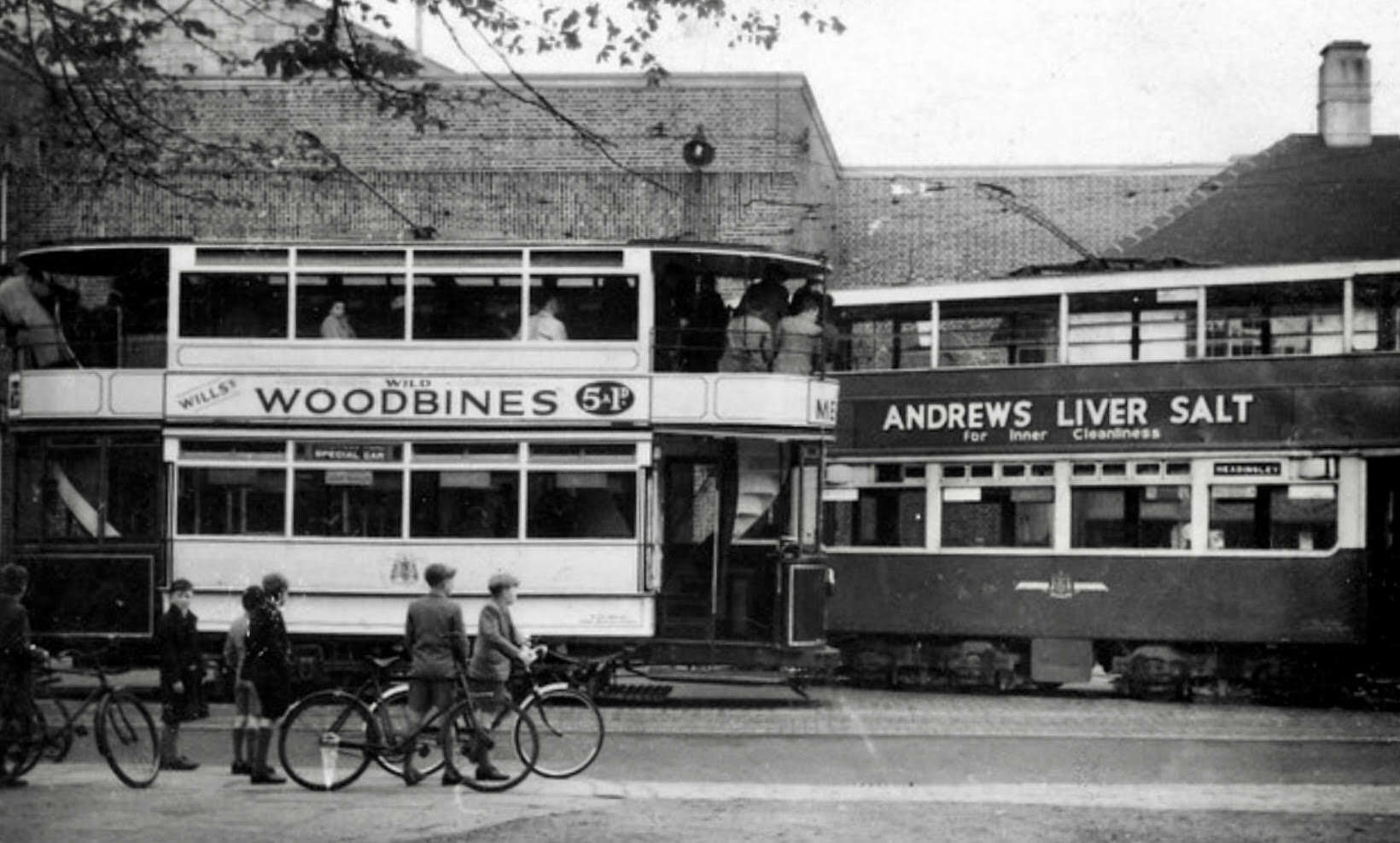
The left tram was originally No.328, withdrawn from service 1946, but in 1948, restored to 1912 condition as No.309 for a film, and used occasionally as a decorated tram in 1949 and 1950 and for an enthusiasts’ tour 8 May 1949, seen here. The right tram behind is an ex-London Transport HR2 (Hilly Route) car, three of which (Nos 277-279) were acquired 1939-40.
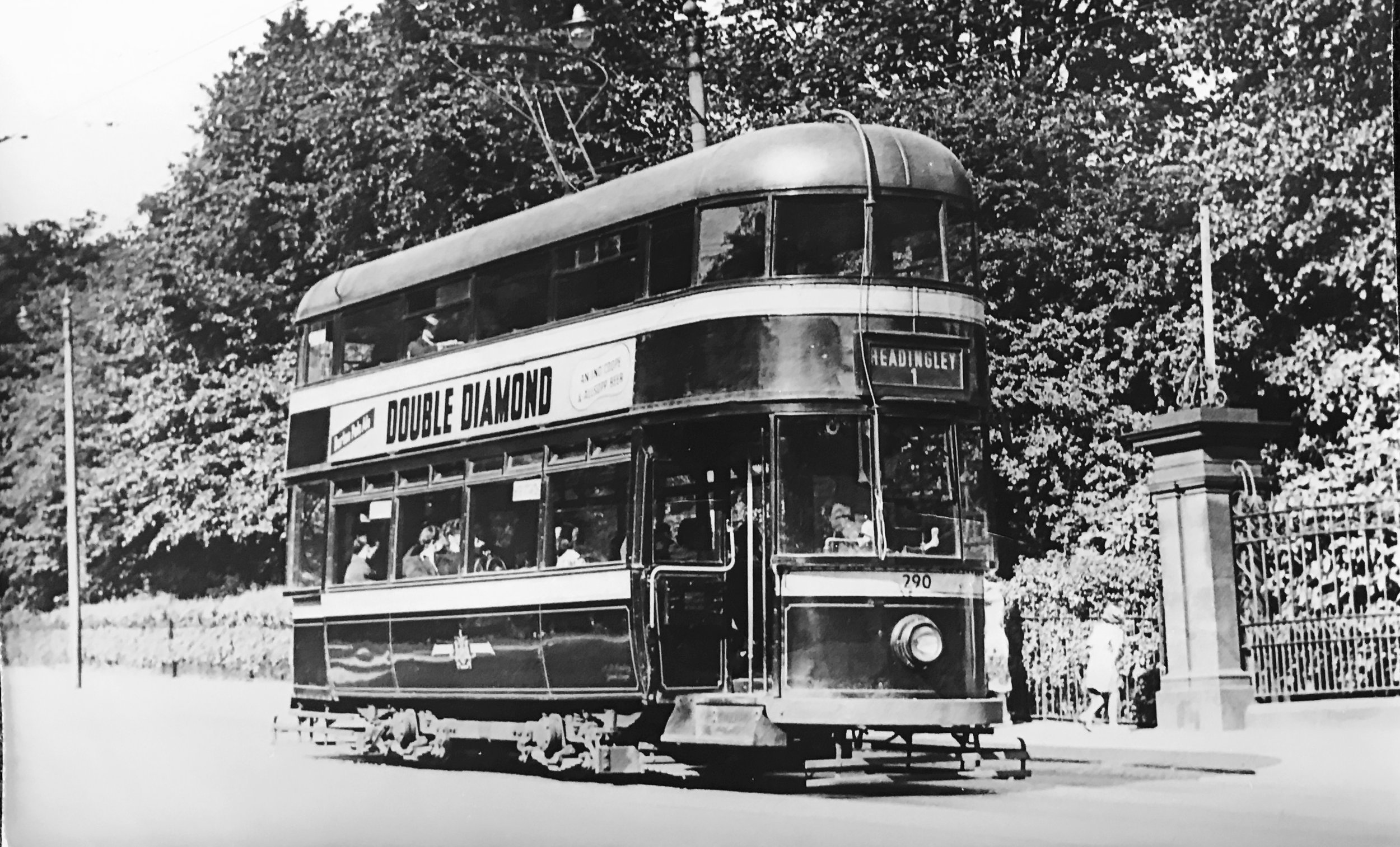
The tram was bought second-hand from Southampton in 1949.

Railcars 601 and 602 were prototypes for a new modern tram fleet, built by CH Roe at Crossgates, at the time the most modern trams ever built in Britain; but 601 operated on the no1 service only June-September 1953, when the modernisation scheme was abandoned.
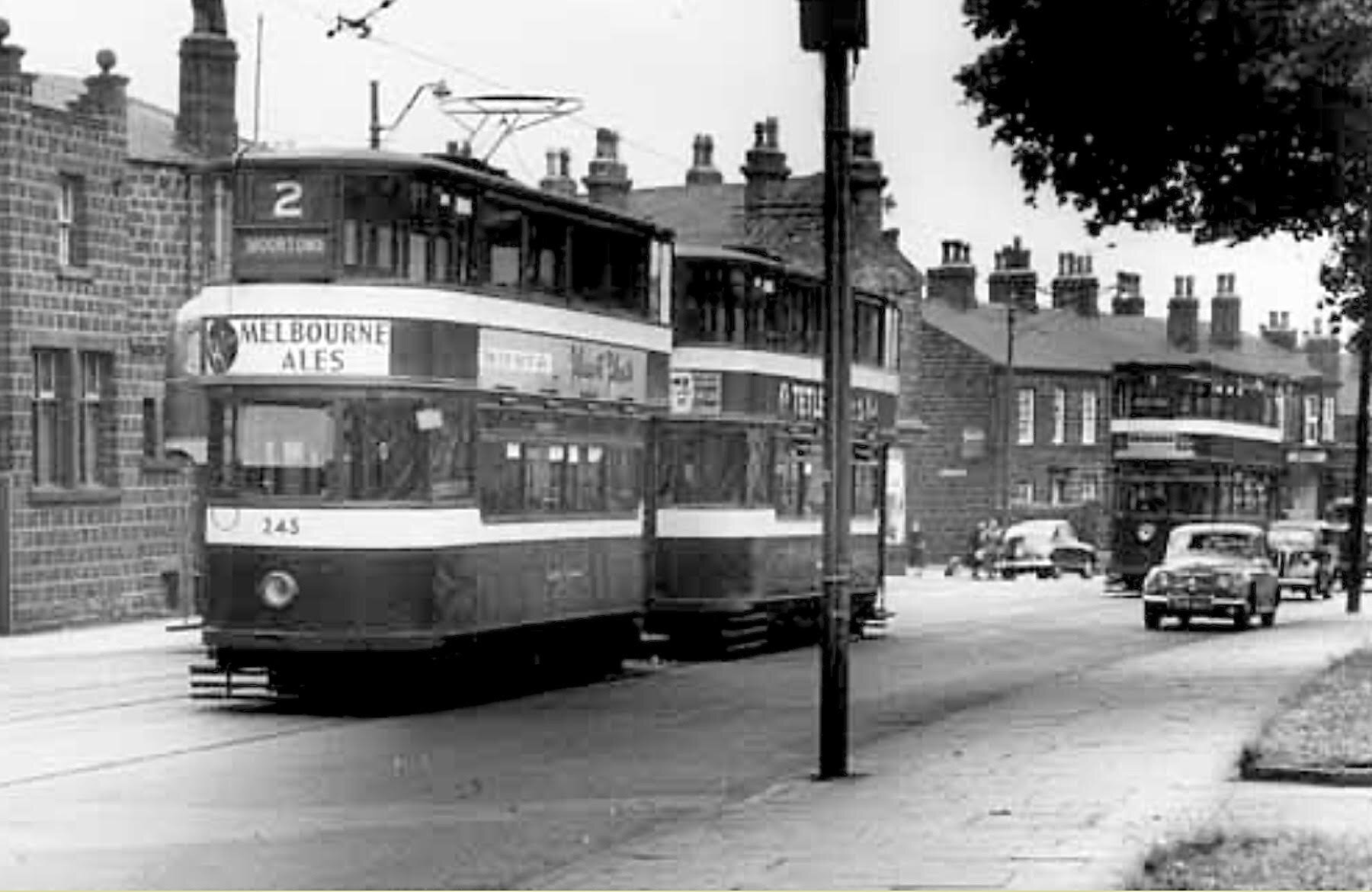
You wait ages, then three come together! The trams are passing the Three Horse Shoes, on Otley Road; the front tram is about to turn into the stub terminus in St Chad’s Road (beside the Depot), prior to returning via Route 2 to Moortown. © Leeds Library & Information Service

Route 2 Circular went on from Moortown to Roundhay, via Street Lane.
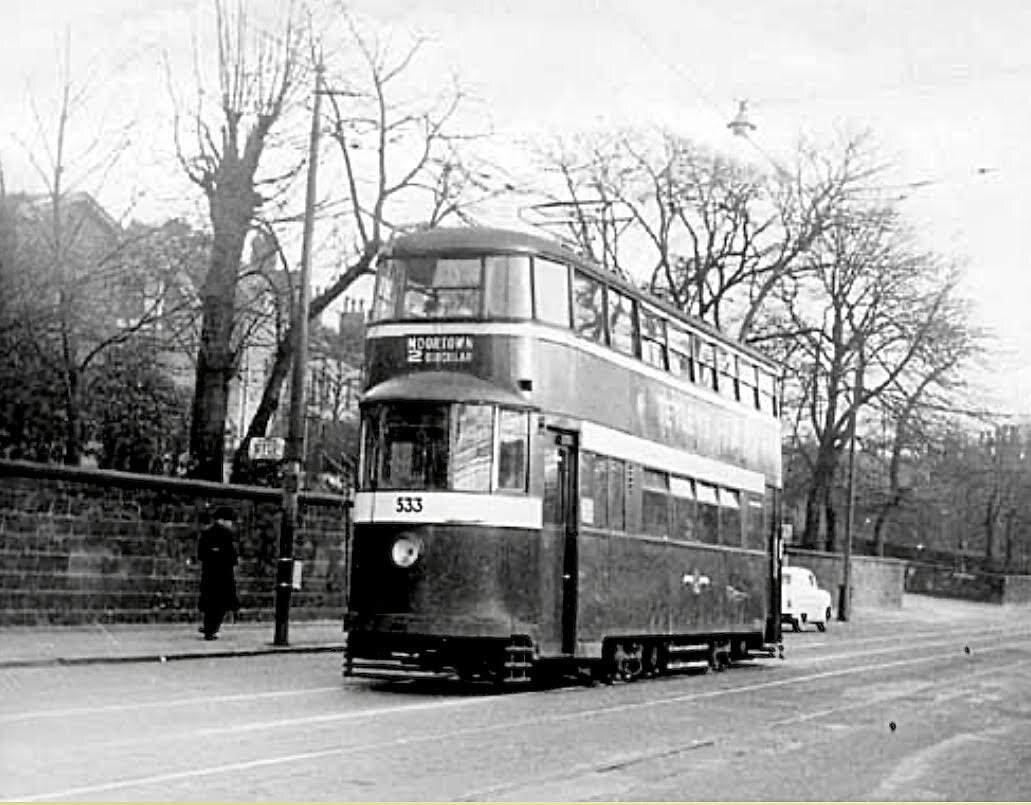
No 533 is an ex-London “Feltham” tram, standing at the Grosvenor Road stop; on the left is Headingley Terrace.
© Leeds Library and Information Service
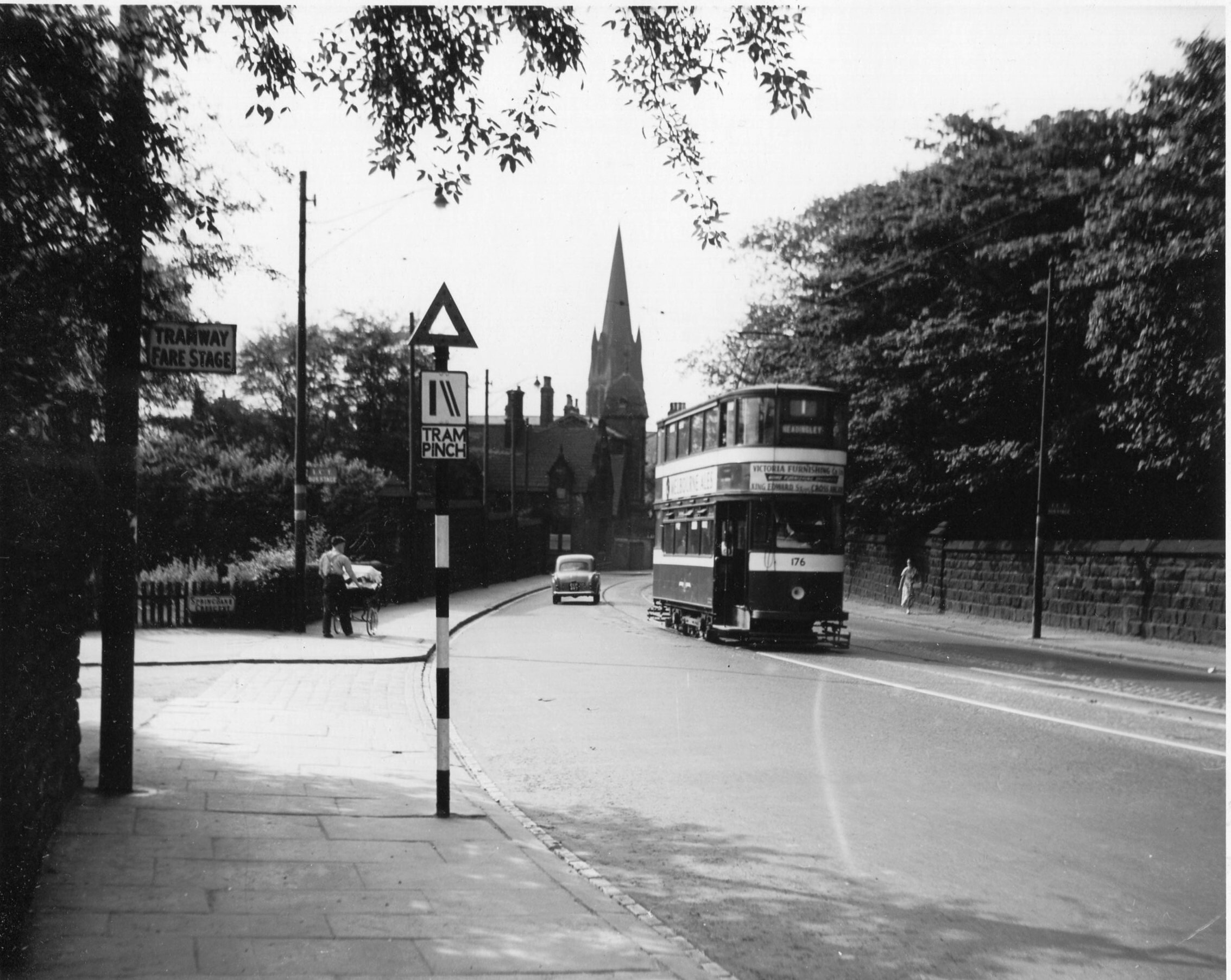
The “Tram Pinch” sign is a warning to motorists that the tram lines come close to the footpath.
© Leeds Transport Historical Society


The tram is travelling north through West Park, just past the Spen Road junction. © LLIS
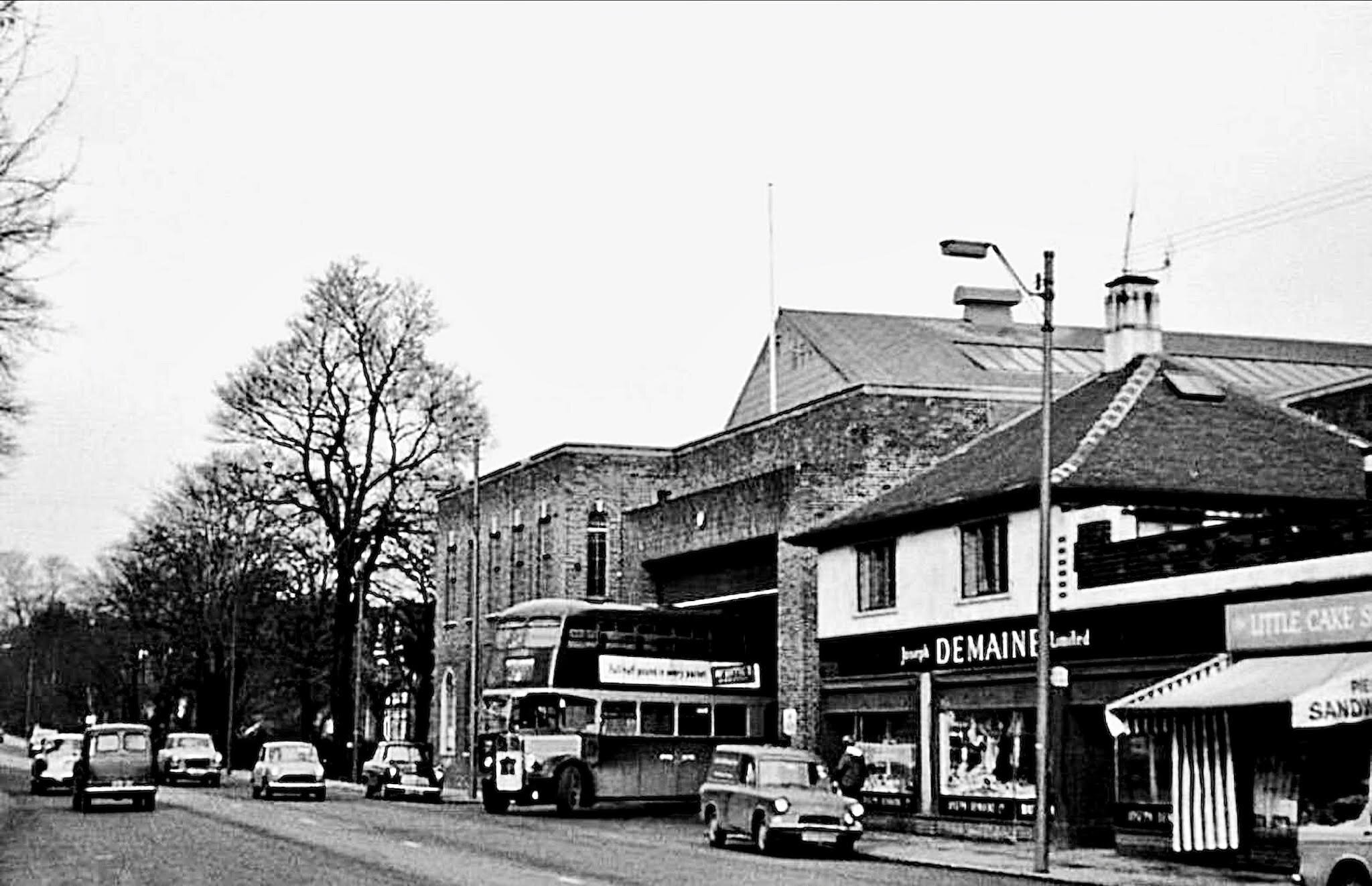
The tram rails are still there, just strips of tarmac filling the grooves; the garage was demolished in 1992 (now retirement housing).
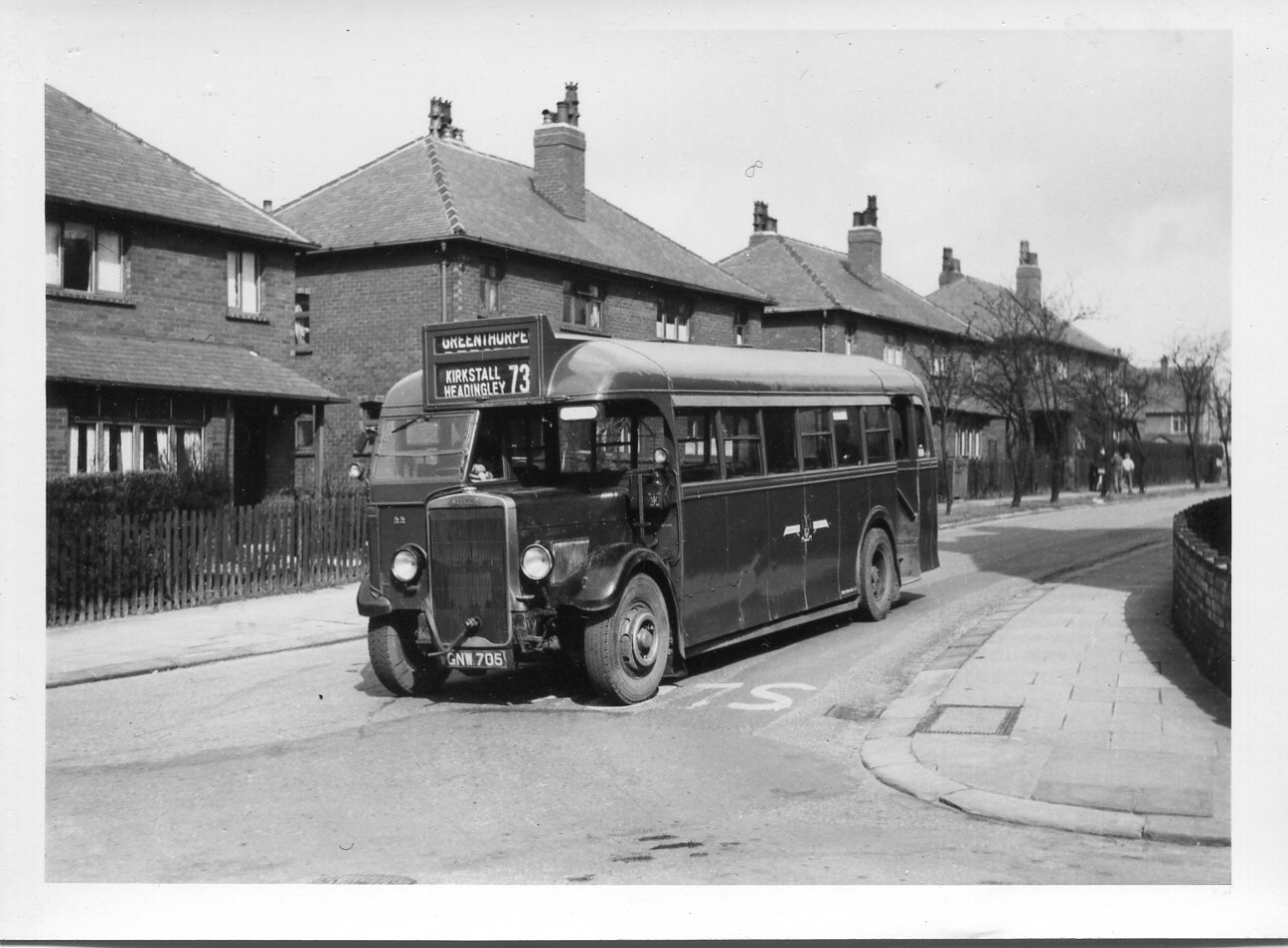
Leyland “Tiger” TS8 No. 22 (GNW 705) is about to turn right from Headingley Mount into Ash Road
© Leeds Transport Historical Society
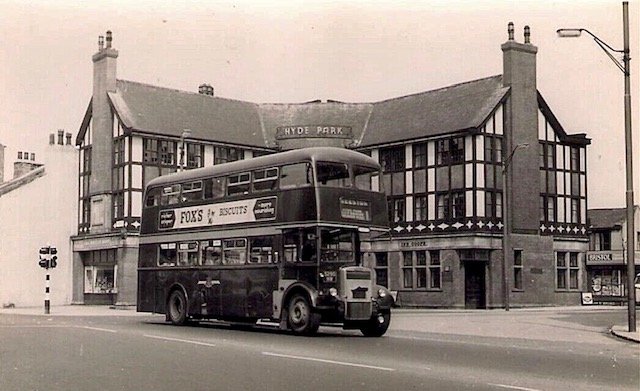
Roe Leyland Titan PD3/5 with bodywork by C.H.Roe (of Crossgates) is leaving Headingley.
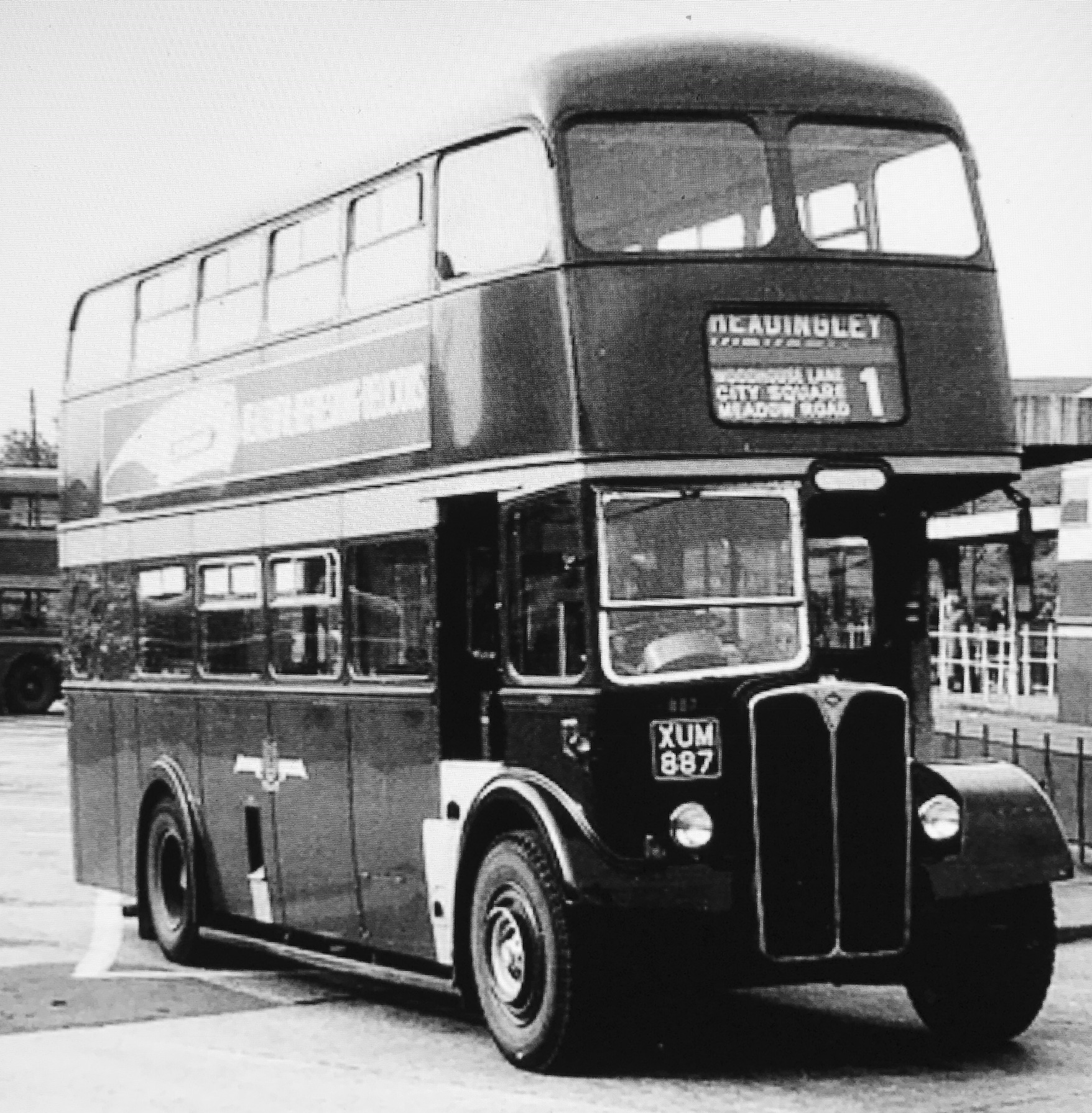
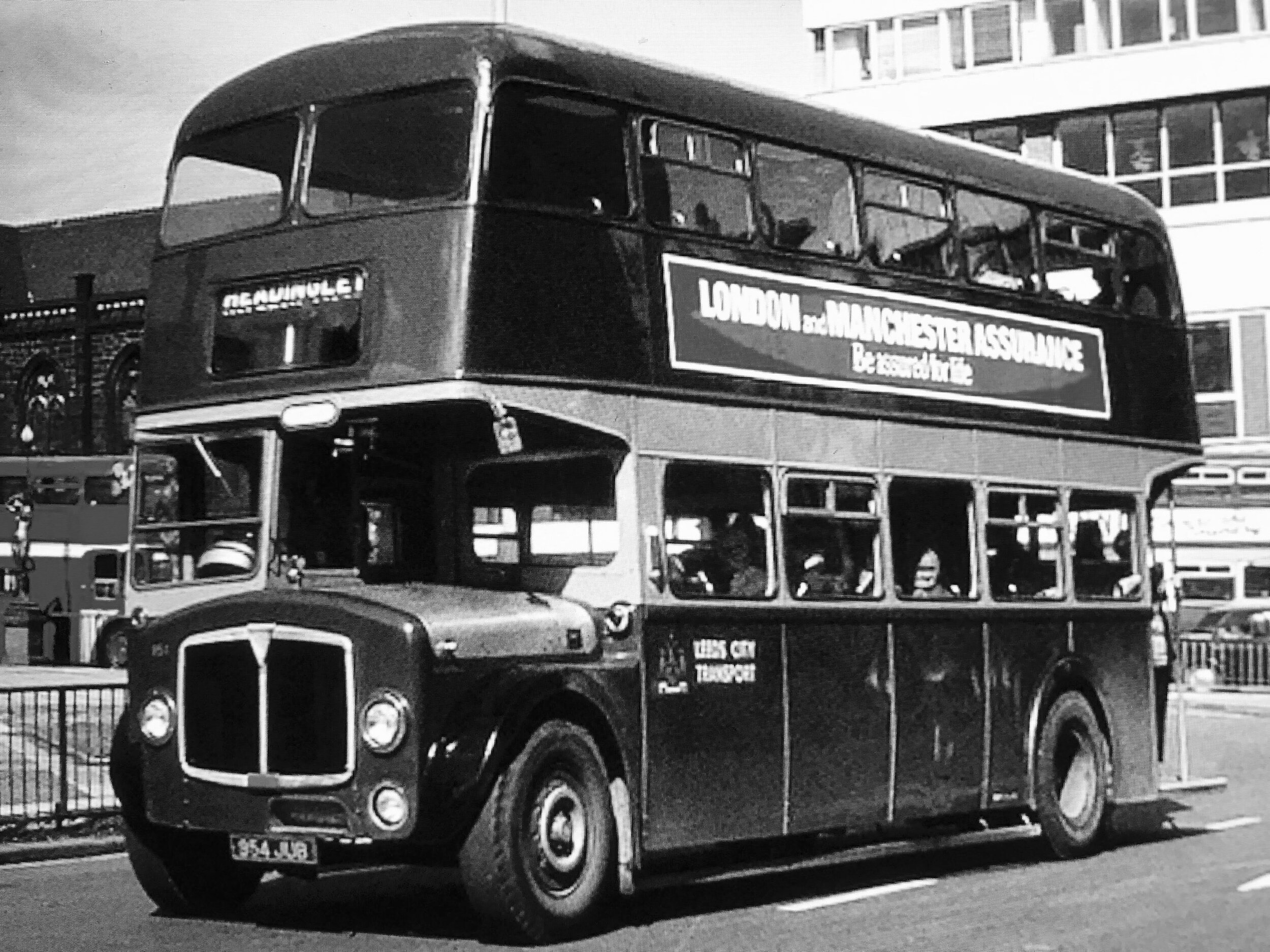
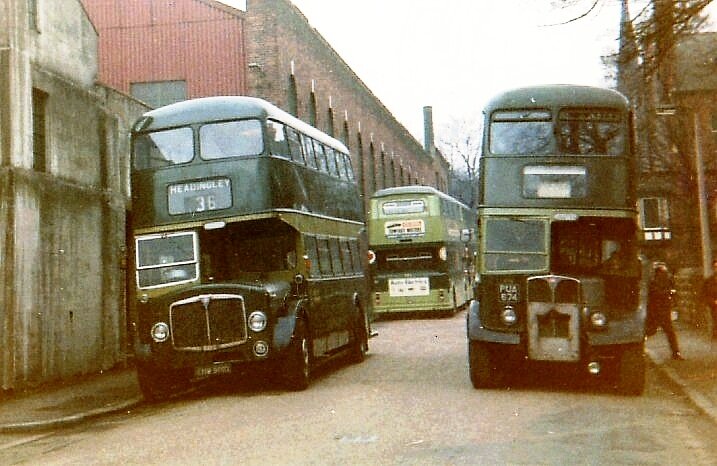
Left to right: AEC Regent V; Leyland Atlantean (in reversed livery, to differentiate one-man-operated buses); AEC Regent III.








































The omnibus made Headingley into Leeds Number One Suburb. In principle, the village became part of the town when Leeds was granted its charter in 1626; but in practice, Headingley became a suburb only when it was connected by a regular bus service in 1838. And this connection was the first such in Leeds - and it remained the No1 service (until renumbered in 2024).
In the articles below -
● Suburban Omnibus outlines the history of the No1 bus service;
● New Green Buses reports recent bus developments; and
● Walking to Skipton on the X84 shows that local buses also give residents access to the Yorkshire Dales.
For more on the buses and trams, see Chapter 6 of Eveleigh Bradford, Headingley: this pleasant rural village, Northern Heritage (2008). For more detail, see Jim Soper, Leeds Transport, 5 vols, Leeds Transport Historical Society, 1985-2011 (copies available on request).
Photographs by kind permission of Leeds Library and Information Service (LLIS), The Thoresby Society (TS), Leeds Transport Historical Society (LTHS), Leeds University Library Special Collections: Godfrey Bingley Collection (UoL) and Helen Pickering.
Some photographs are subject to copyright and should not be reproduced without the owner's permission.
Every effort has been made to trace and contact all copyright holders. We would be pleased to rectify at the earliest opportunity any omissions or errors brought to our notice.
Thanks to Malcolm Hindes of LTHS for advice and contributions.
See also the Bus page and The Headingley Highway. For the local railway, go to Headingley Station.
RELATED ARTICLES
Richard Tyler: A real connection between Headingley and Leeds was only made 180 years ago, when Leeds’ first regular bus service began …
Helen Pickering: Look out for the new bright green, ultra-low emission buses travelling along Headingley Lane ...




